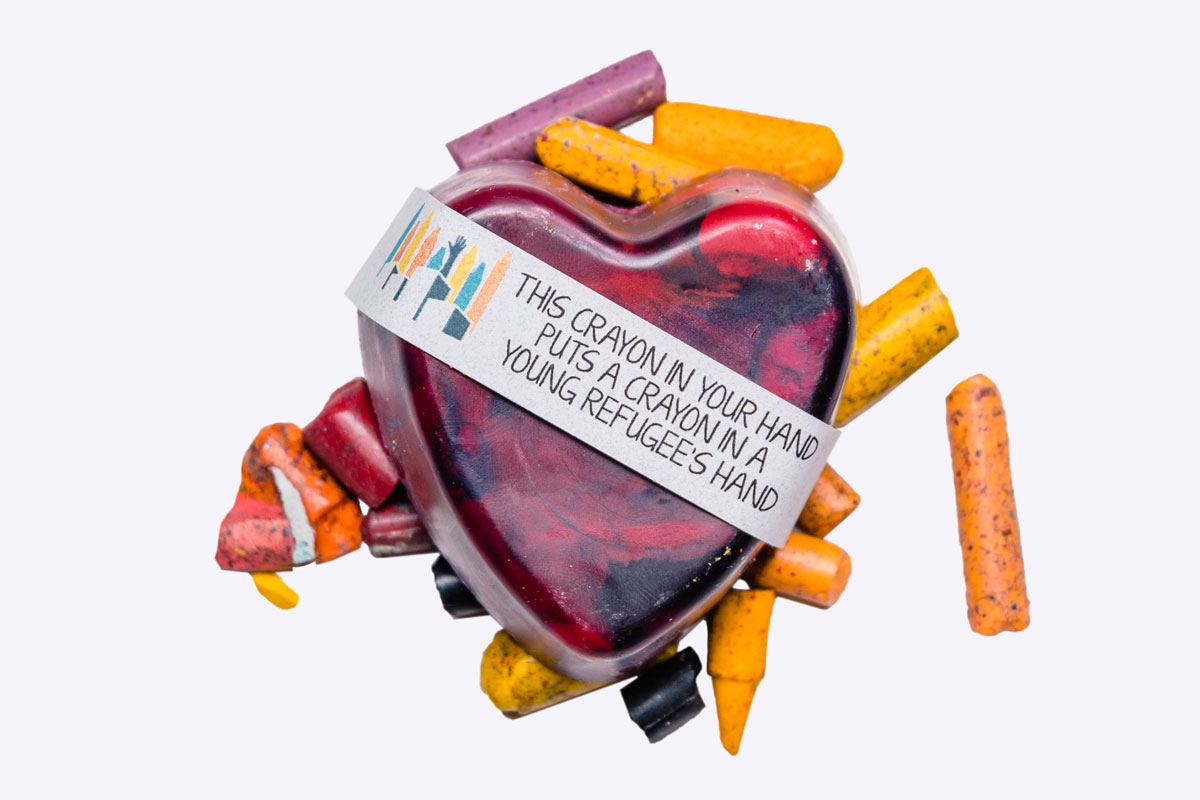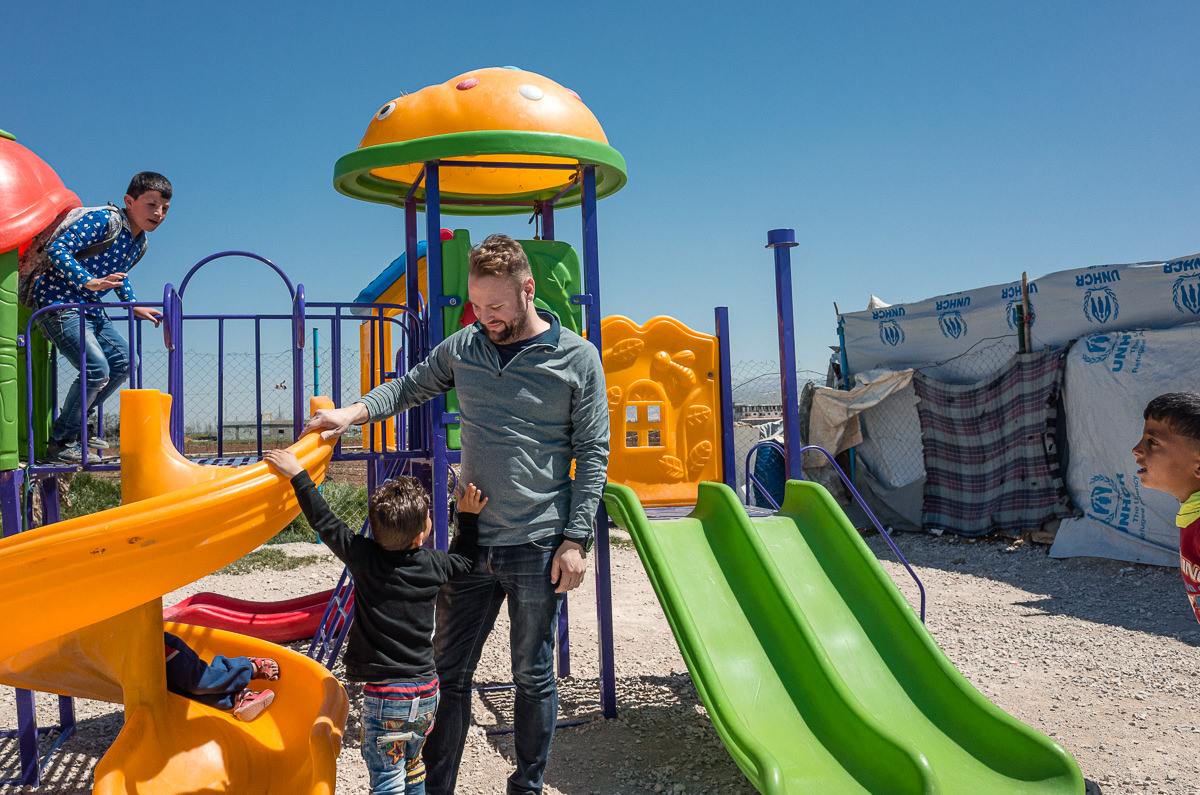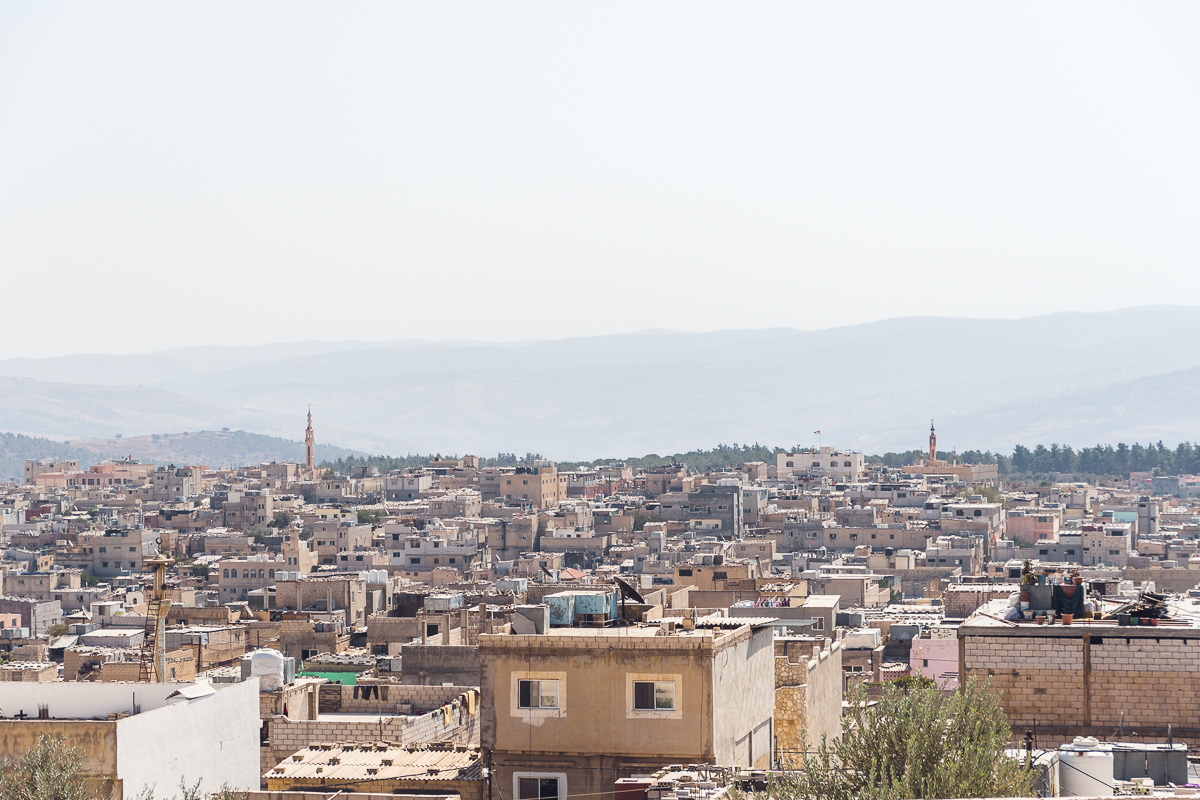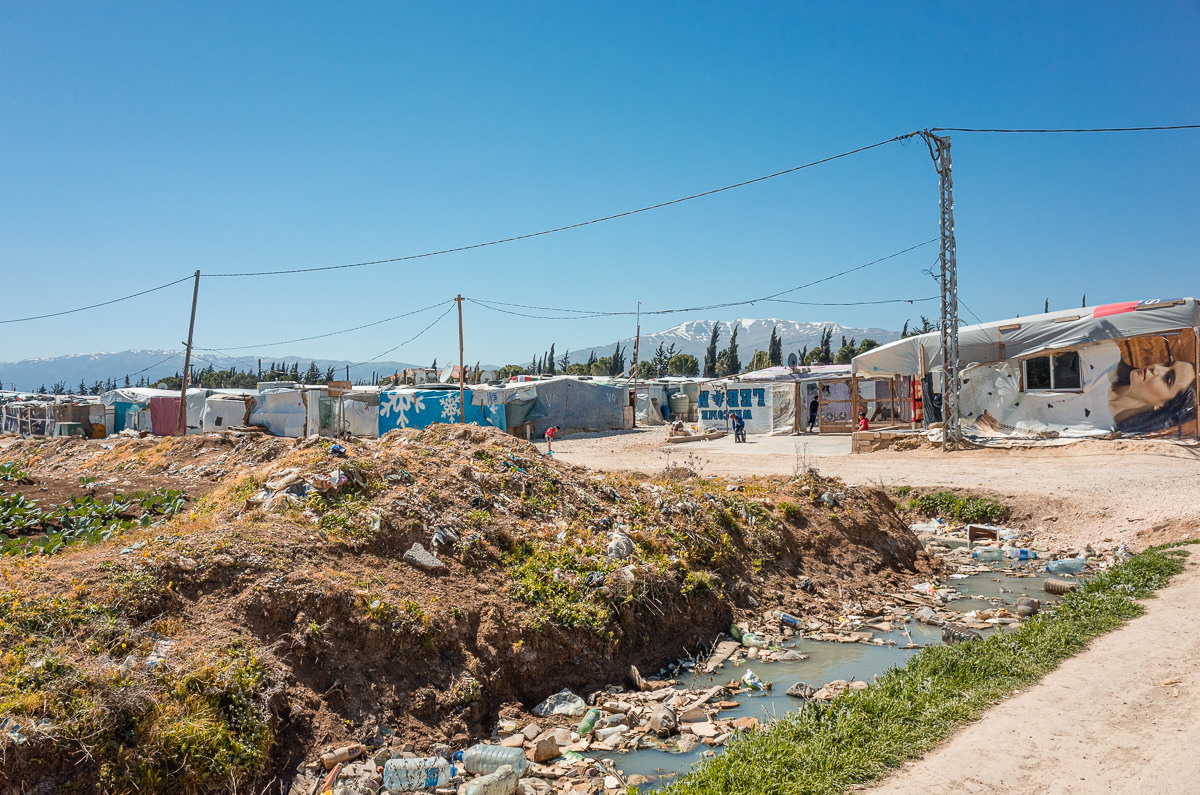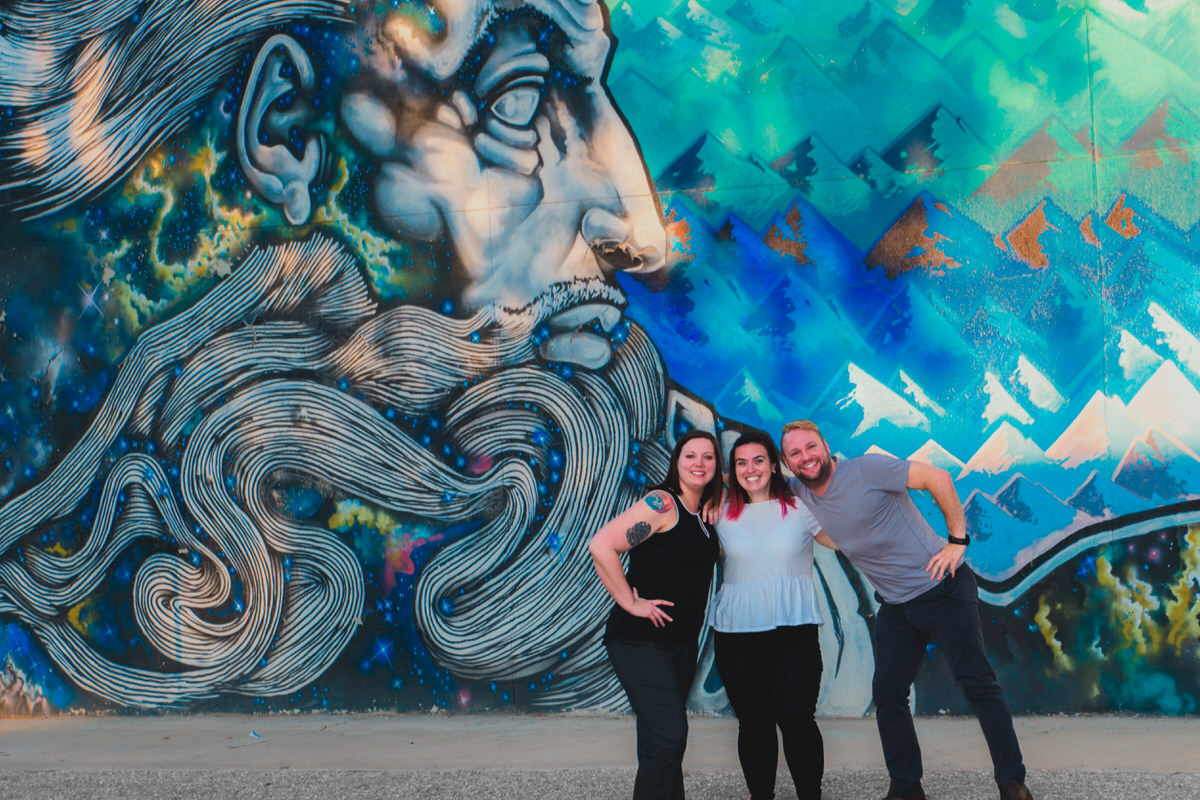Film / Photo / Design / Other
Supporting a child’s right to creative expression through the distribution of rescued art supplies within refugee camps.
The Right to Be Creative
Among the 26 million refugees worldwide, over half are children¹. A majority of these children will have been displaced for more than 5 years². From a young age they will have faced many hardships and will continue to struggle to find a better life as they develop into young adults.
In 2015 I traveled to the Middle East to begin a three year project documenting young refugees in some of the oldest refugee camps in the world. It's here I saw first hand how a simple box of crayons and a blank sheet of paper could open a world of possibilities for a young child living in a grey world.
Art is an invaluable tool for communicating ideas, emotions, and knowledge³. It can be a simple way to escape for a moment and dream, it can be therapeutic and without a doubt it is critical to the development of a child's mind. Color the Camps was created for children with no access to art supplies by providing them a means to be creative and feel joy. Every child deserves the basic human right to creative expression.
A Crayon in Every Hand
Seeing a child's face light up when given a few crayons or colored pencils in the camp was a life changing experience for me. Hours could go by as I watched children escape the grim reality that surrounded them though art. One thing I always took for granted as a child and always had readily available at home was art supplies. Often times these supplies would last only a school year before being replaced with new ones the following year. These young refugees due to economic or geographic reasons had no access to art supplies and some had never held something so simple as a crayon. During a brief visit back home I was determined to return with my luggage full of used or unwanted art supplies for them.
One night I met with Betty and Chelsea who have a passion for both children and art. We discussed how so many art supplies get discarded every year. We then imagined how to rescue these supplies and put them in the hands of young refugees. This was the moment Color the Camps was born and what was originally planned as a suitcase full of crayons soon became hundreds of pounds of art supplies rescued from landfills and given to young refugees on the other side of the world.
Collection
Helping young refugees while saving the environment; for us it was a no-brainer. Chelsea worked tirelessly to establish relationships with local restaurants in Colorado who by law throw away an estimated 100 million crayons every year⁴. We became a registered Colorado non-profit and I created a website that made it easy for anyone to reach out and donate old art supplies. Crayons in new condition would be given to children in the camp while those too small or broken would be given a second life re-melted as heart shaped super crayons.
Connection
We didn't just want to make an impact abroad, we also wanted to reach children locally. Betty connected with several Denver Public Schools and organized ways for children to learn about the refugee camps and allow them to participate in art projects that would reach out to the young refugees that lived there. We also knew that it would not be enough to only distribute these art supplies in the camps so we found small local partners that would use art to continue supporting these young refugees after we left.
Distribution
It was imperative from the founding of our organization that our rescued art supplies went to young refugees who needed them most. Living in the region allowed me to see many camps and the camp's children. During these visits I worked with camp leaders and partner NGOs to plan an effective and safe distribution, one that would ensure every child received art supplies and in equal amounts.
Project Jerash
The poorest of all refugee camps in Jordan, over 50% of its residents live below the national poverty line⁵. The camp was established in 1967 as an emergency camp but has since become the permanent home to its inhabitants who remain without a country to return to.
There is no access to art supplies within the camp. With limited income most families cannot afford to leave the camp and purchase art supplies for their children. Eager to express themselves, children would often use mud from flooded streets during winter storms to paint images on camp walls.
360
Pounds of Rescued Crayons
1000
Colored Gift Bags
1000+
Children Received Art Supplies
Preparation
Duffle bag after duffle bag filled to the brim with crayons passed through the x-ray machine at Queen Alia Airport in Amman. Each time security officers expressed a growing mix of confusion and frustration. At first I thought they must think we're crazy. I glanced at the x-ray screen and then panic hit me, the shape of these crayons could be confused for bullets! A security officer came up from behind and tapped me on the shoulder to be escorted into an interrogation room. There would be some explaining to do.
We had spent the past six months planning this trip and as our first distribution we wanted to go all out. After all, Chelsea had closets in her home filled with boxes of crayons, Betty had a thousand hand painted paper bags and I with the help of a friend received the camp's blessing to host its first ever coloring party
Surprised that we knew Jerash camp existed and that we would go to such lengths to bring children crayons the security officer with a big grin on his face welcomed us to Jordan.

Jerash Coloring Party
Distributing art supplies was not the only thing we wanted to do in Jerash camp, we also wanted to host a coloring party to provide the time and environment for children to have fun and get creative. Every art supply bag had one side colored by someone in Colorado who learned about the camp and wanted to give the kids something colorful when they received their supplies. Each bag contained equal amounts of crayons and coloring paper. We were expecting 1,000 children in the camp to participate in the event, however we were prepared for more. To our amazement hundreds of children were already waiting for us when we arrived the day of the coloring party. So many children showed up that the party was split into two locations to accommodate every child. To help with distribution we were joined by Orenda Tribe, an organization that uses art to help children in the camp as well as a dozen local and international volunteers. Mahmud, a friend and local from the camp worked closely with me to cover all logistics and make sure this event was a true success.
For children that did not attend the party, the team toured the camp for a chalk walk, giving every child we passed sidewalk chalk to color the grey walls of the camp. Our time in the camp concluded with tea in the home of a single mother whom we provided with heart shaped crayon molds and any excess crayons that had been damaged during travel. This gave her the opportunity to up-cycle these crayons and future crayons for children of the camp as well as provide a possible means of income.

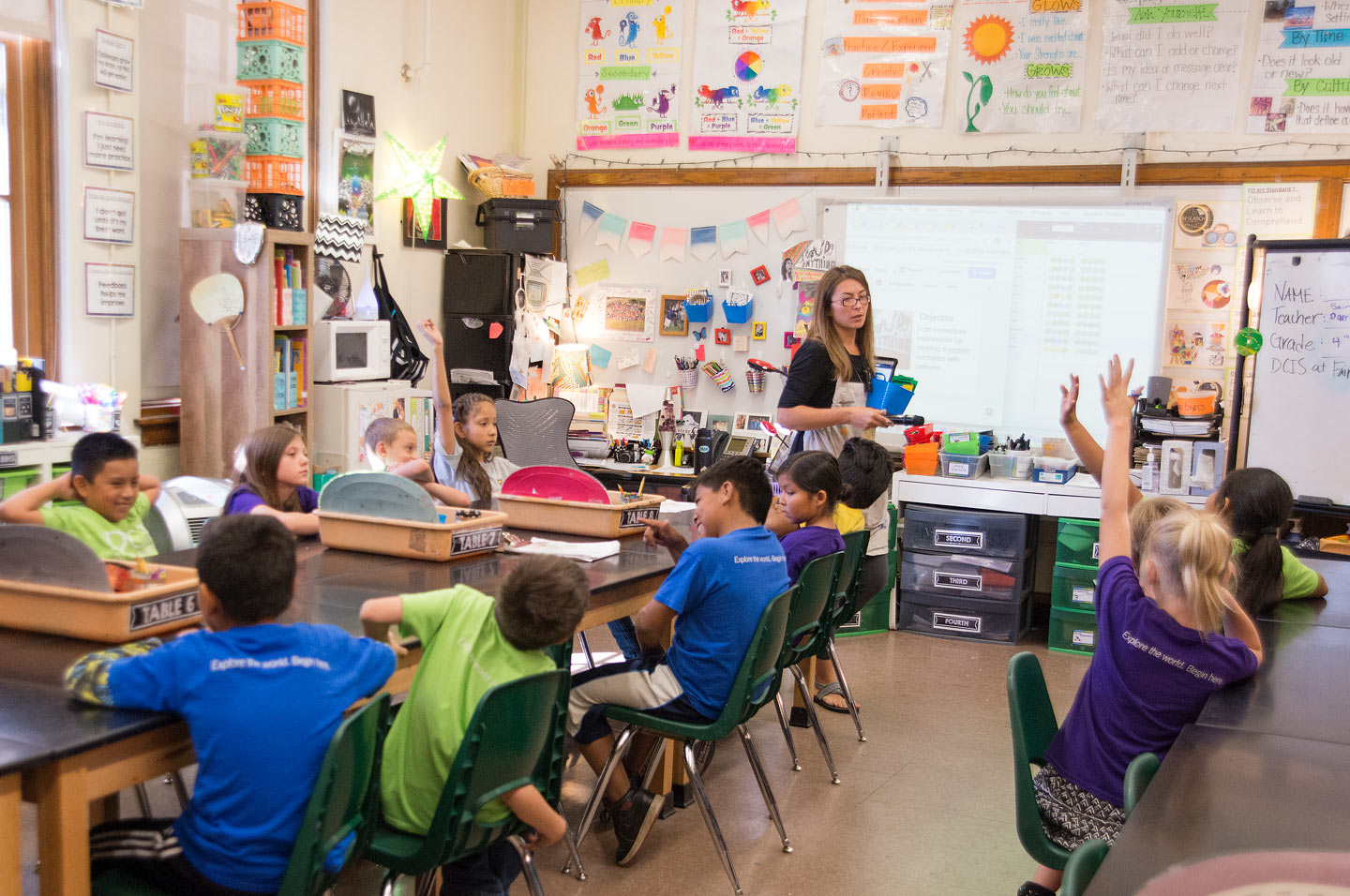











Denver Jerash International Art Exchange
The Denver Center for International Studies is a Denver Public School that promotes intercultural learning. We asked children ages 7-12 to draw their own self portraits and images that represent their lives. They were then photographed holding their artwork by local photographer Jon Youngblut. We then printed these portraits and took them with us to Jerash Camp. With the help of children from the camp these portraits were then pasted on the wall of the community center with a multilingual explanation of the project. For some of the children in the camp this was their first time seeing a foreign child their same age and many were immediately drawn to their images and art when they arrived for the coloring party.
We repeated the same process for children in the camp during the coloring party and I photographed them holding their art. These images were then put on display in the Denver school and for many children it was their first time seeing a refugee their same age. We then thought it would be interesting to put both collections together and have them on display. The Spring Cafe in Denver employs and supports refugees and allowed us to exhibit all images for the general public.
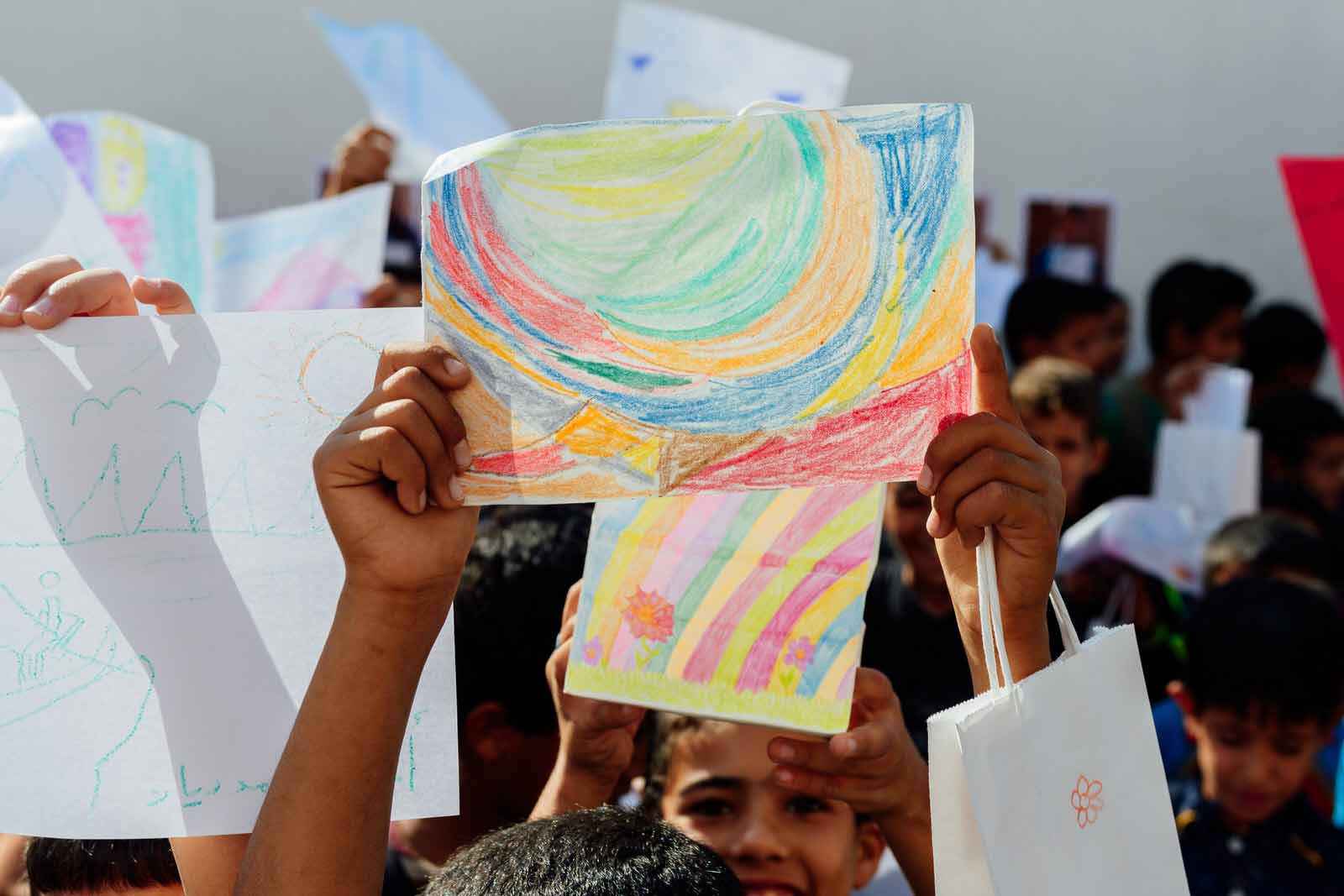
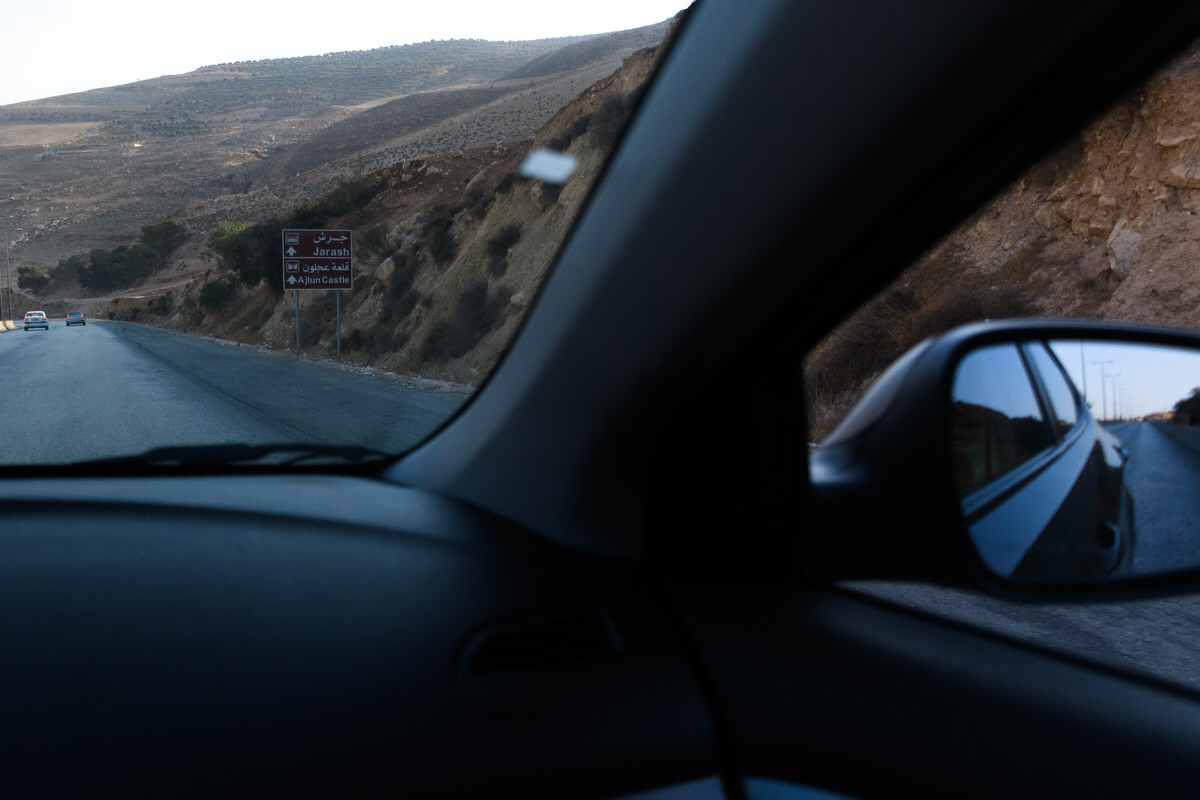
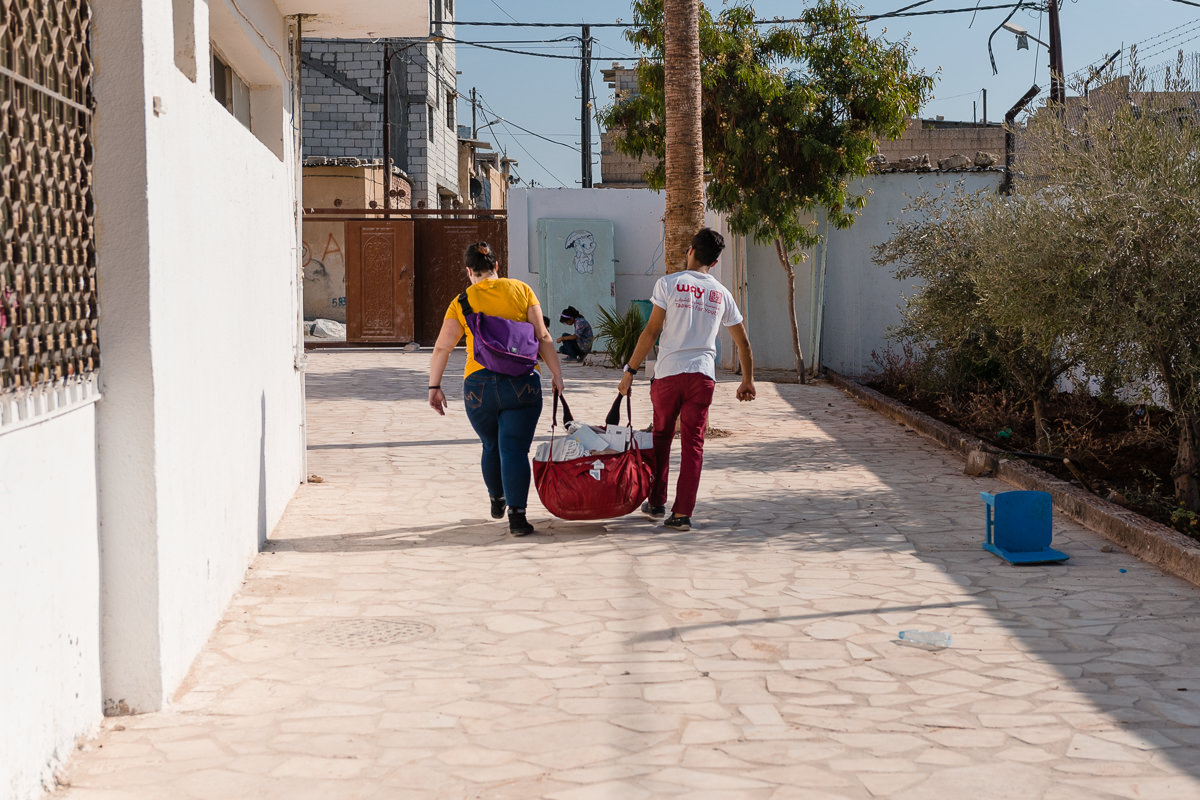

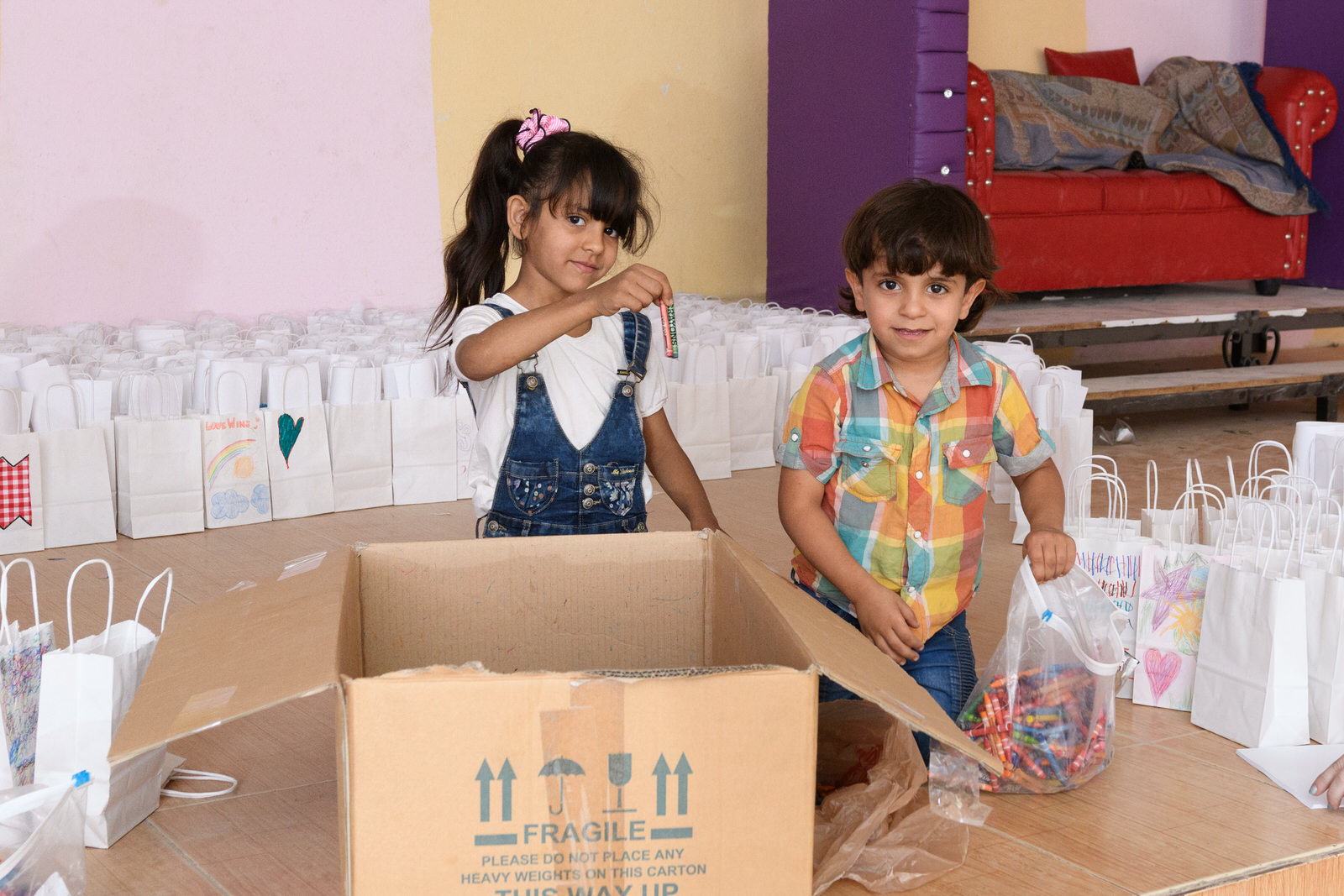

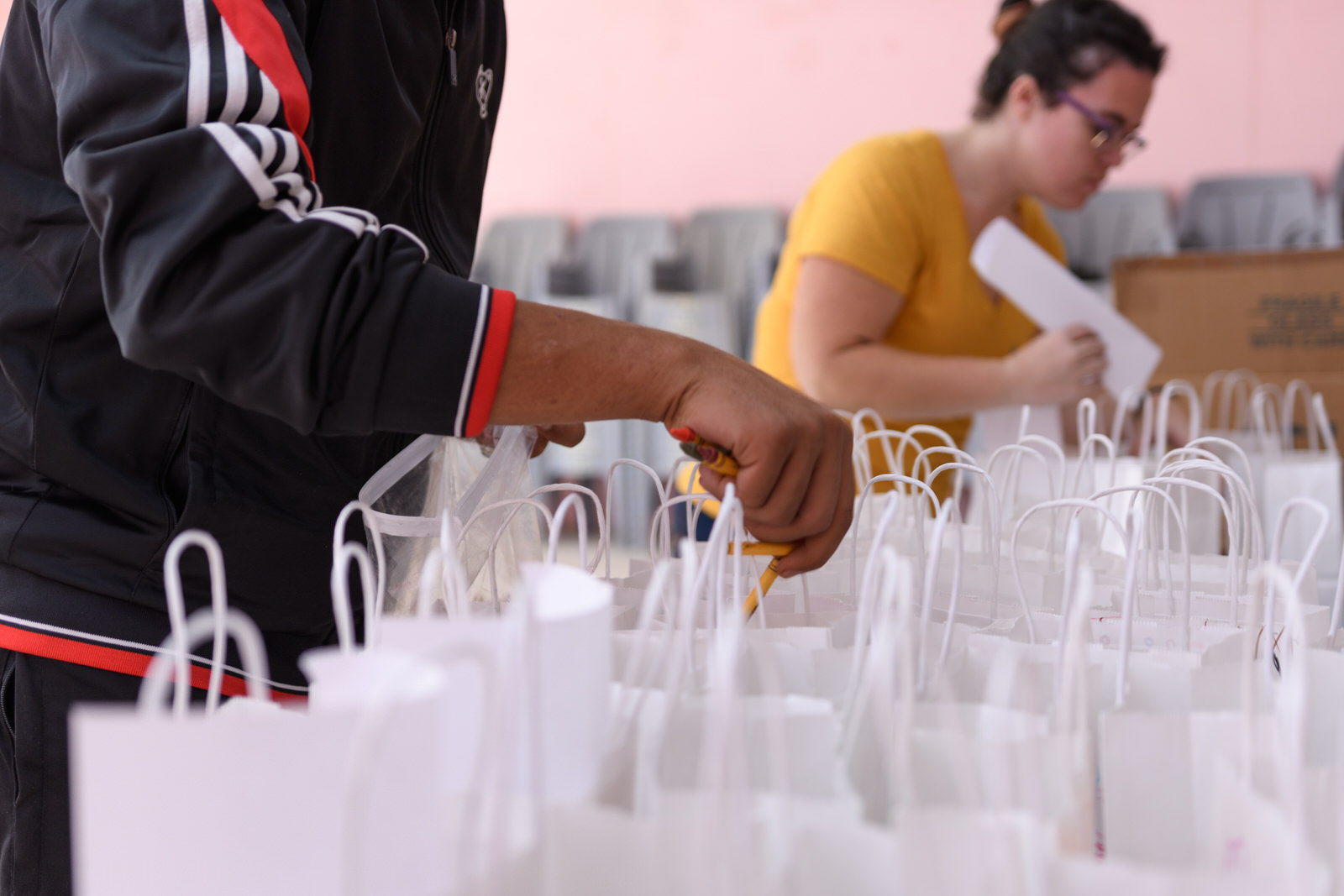
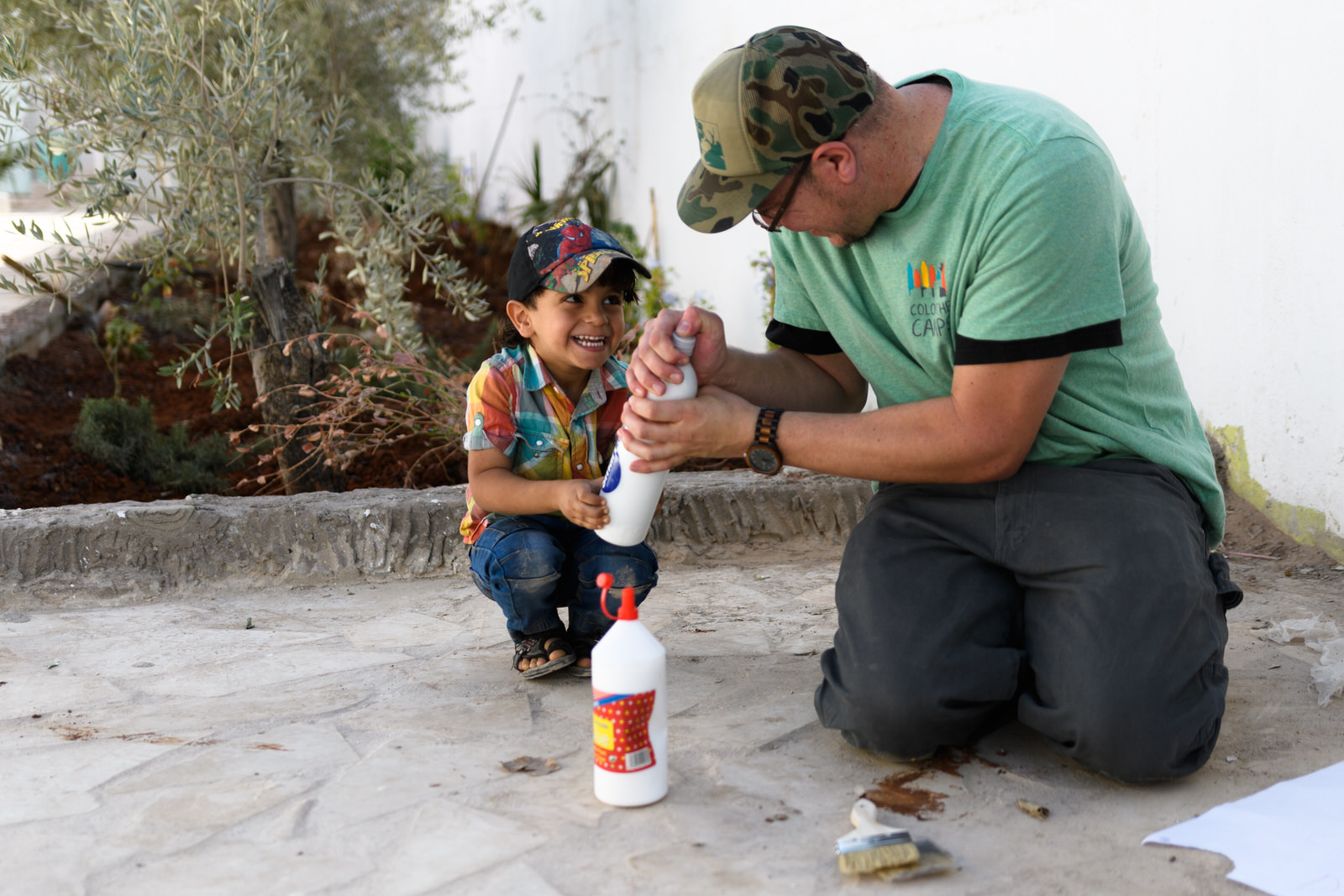


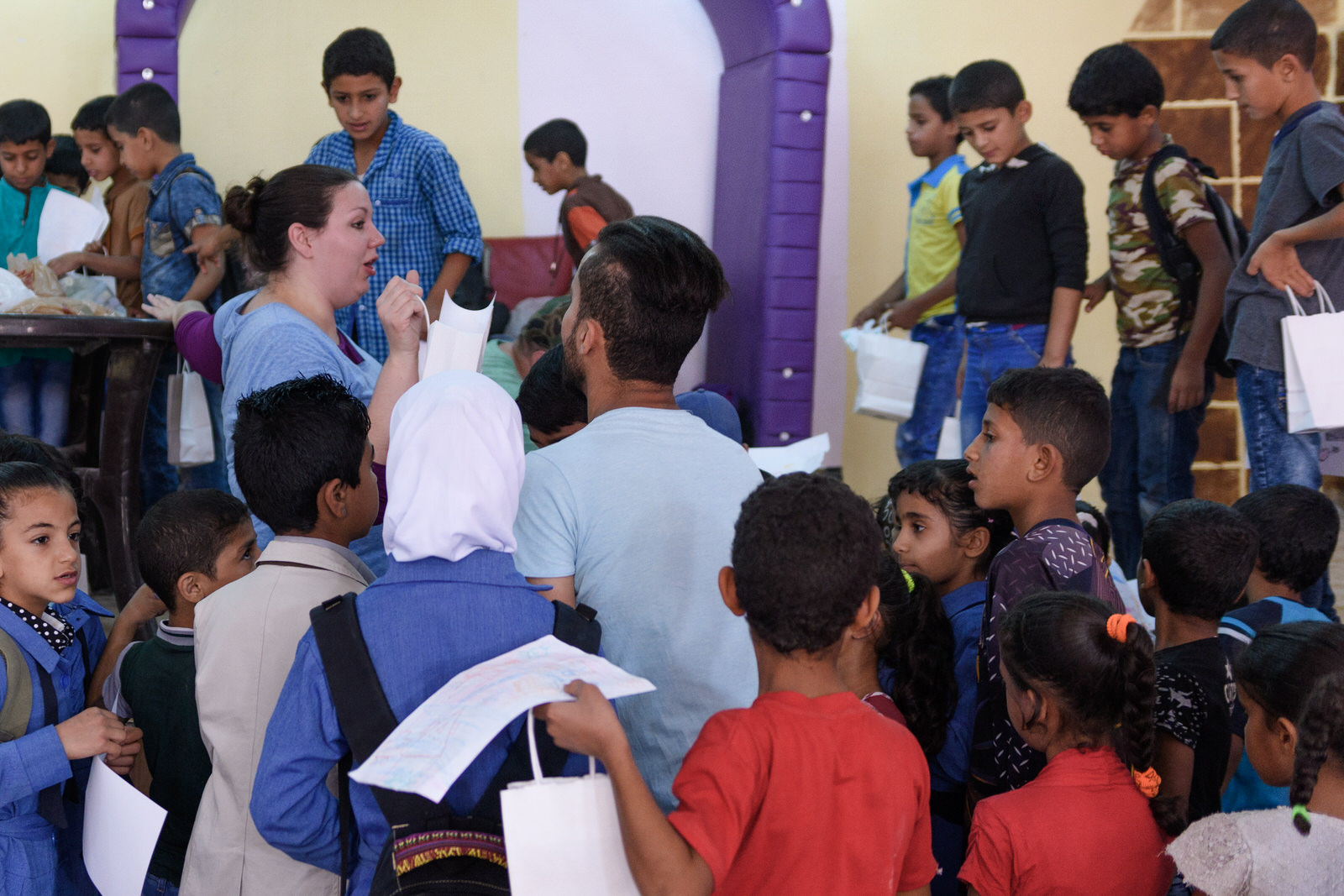
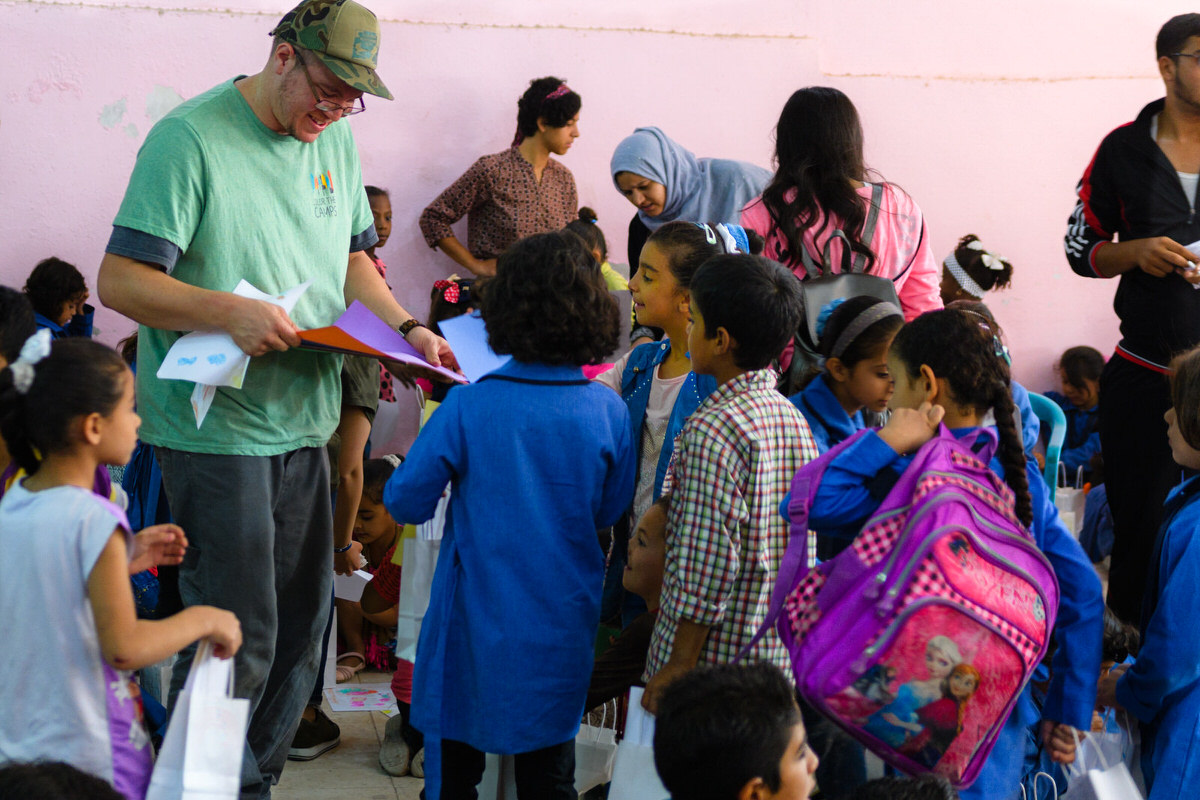
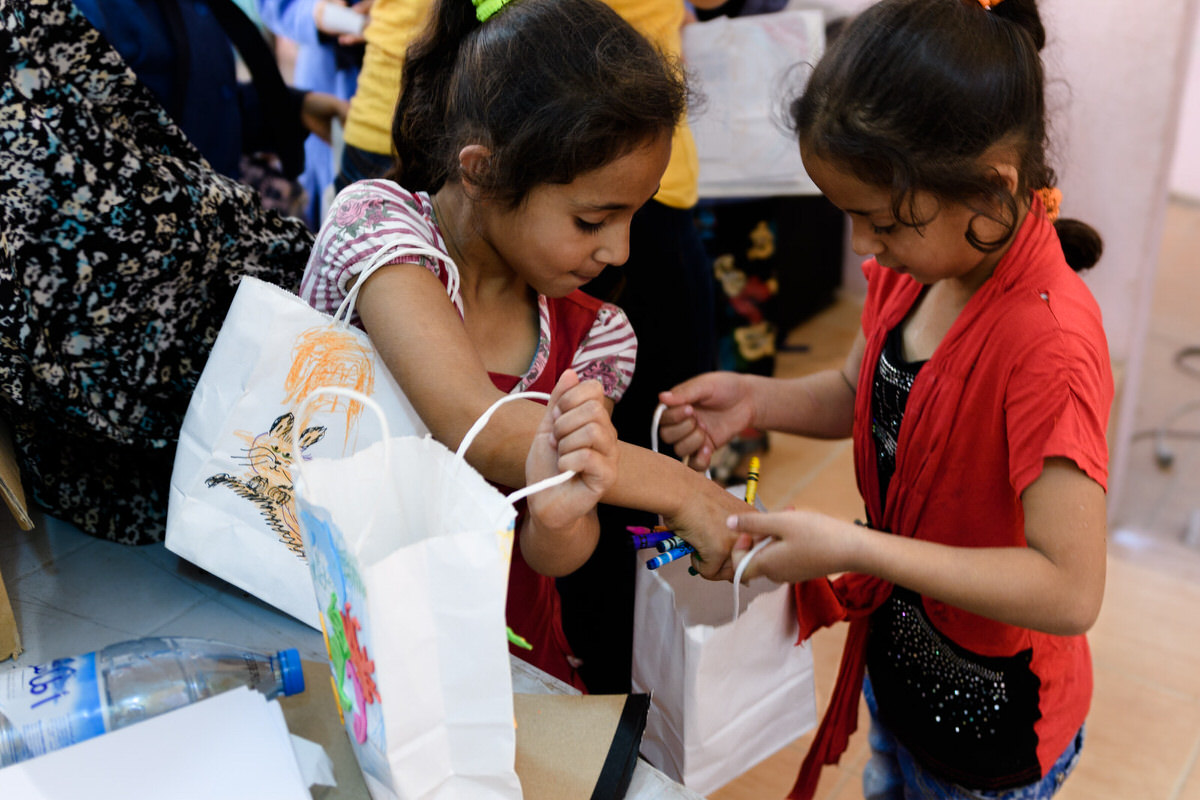
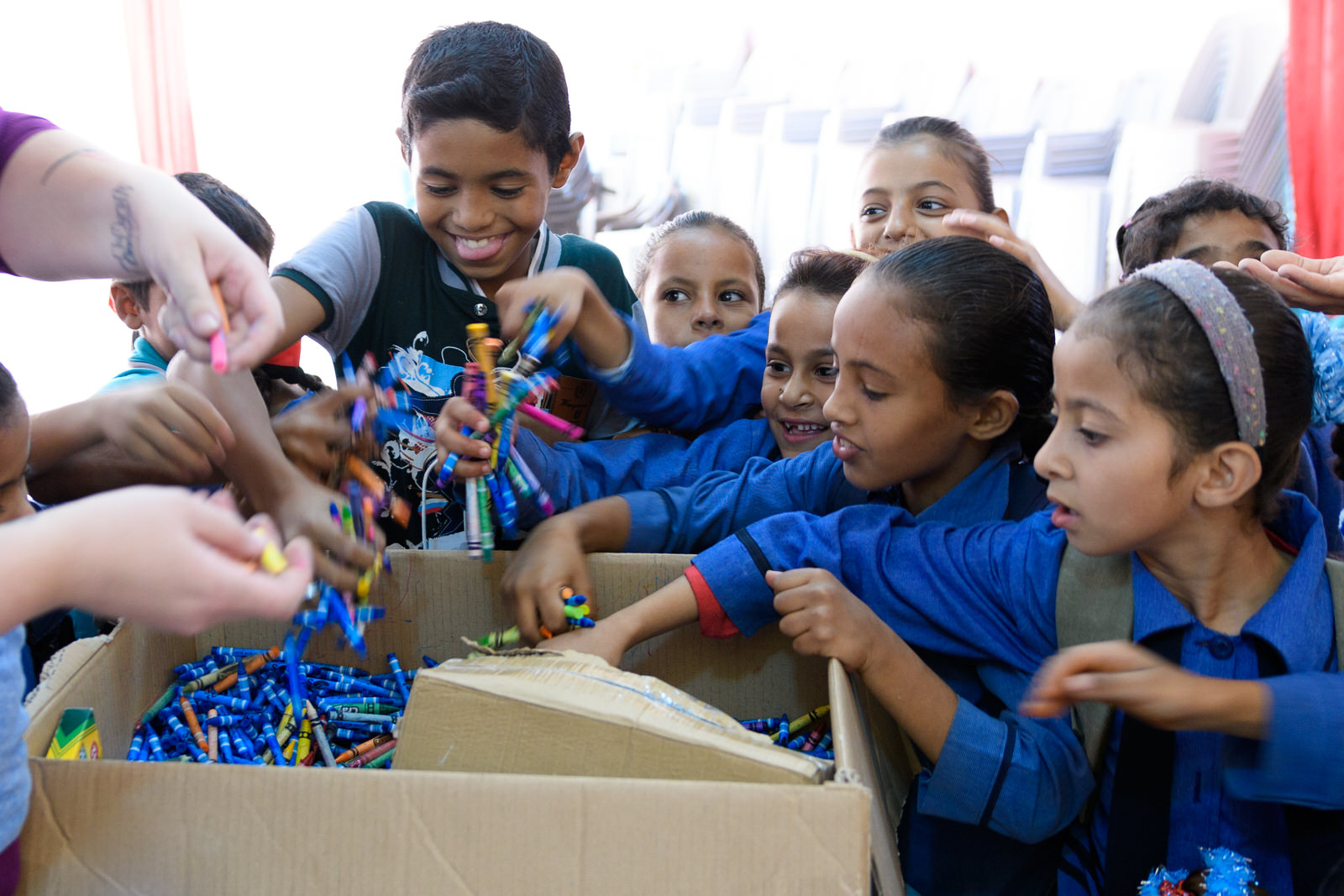
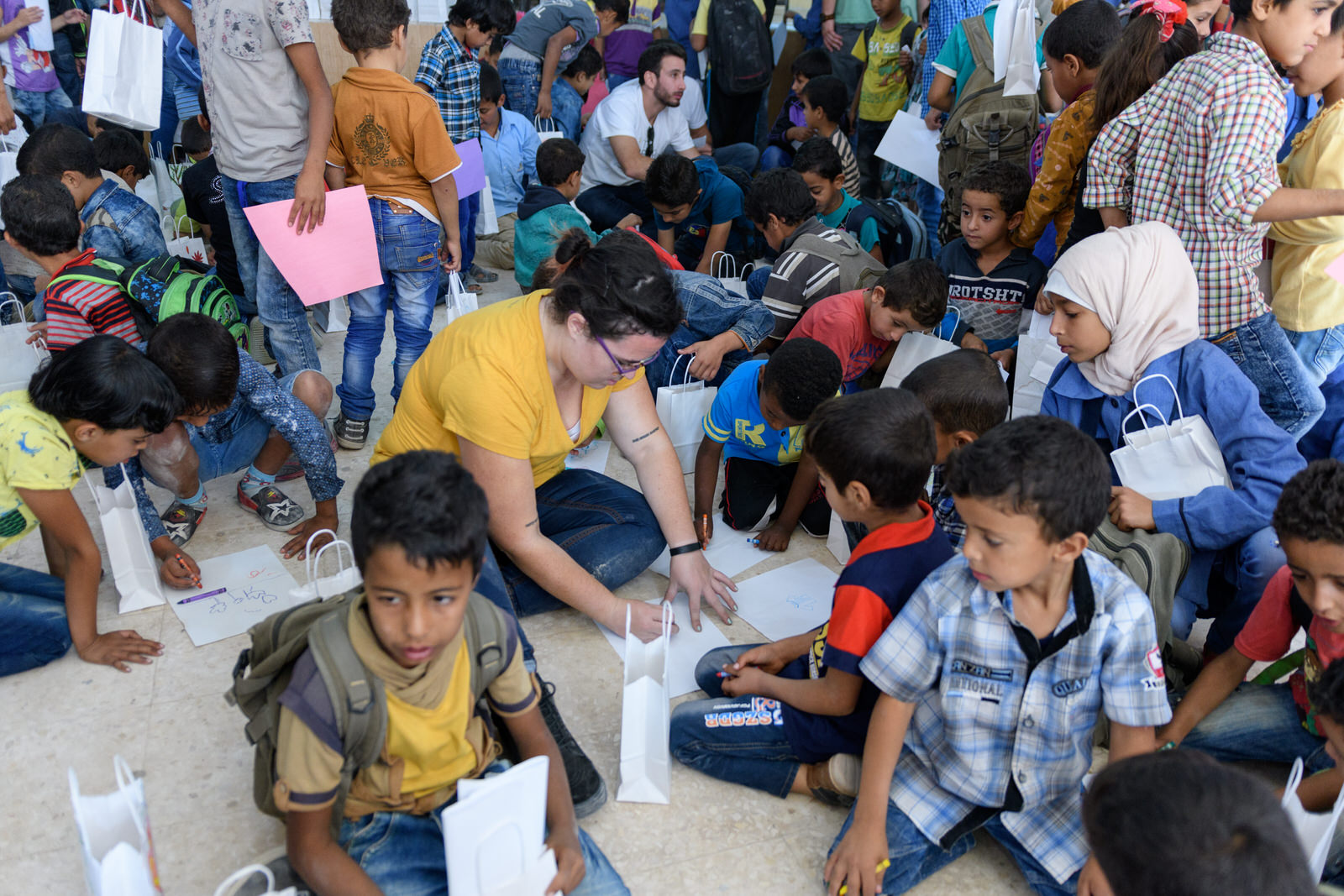

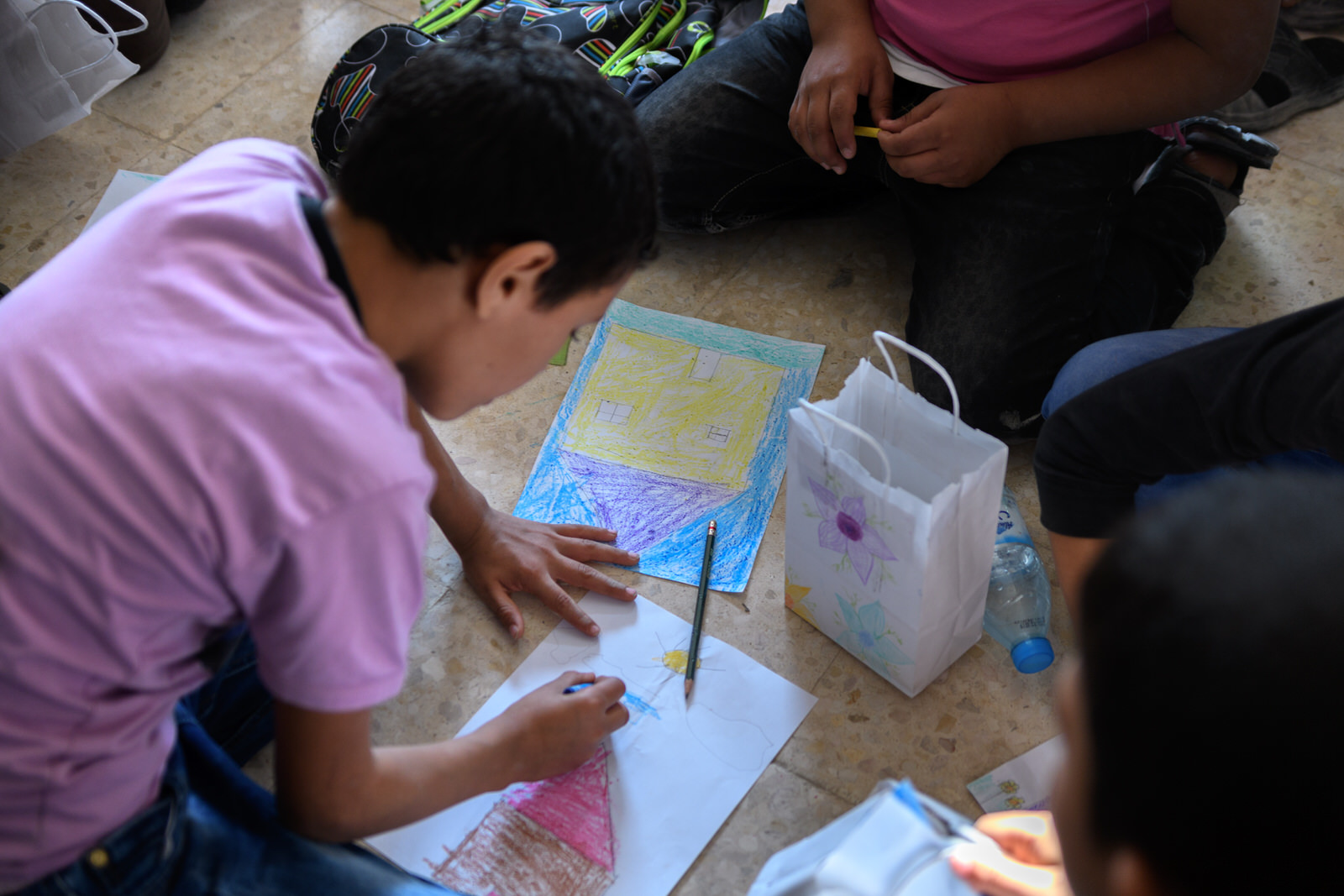
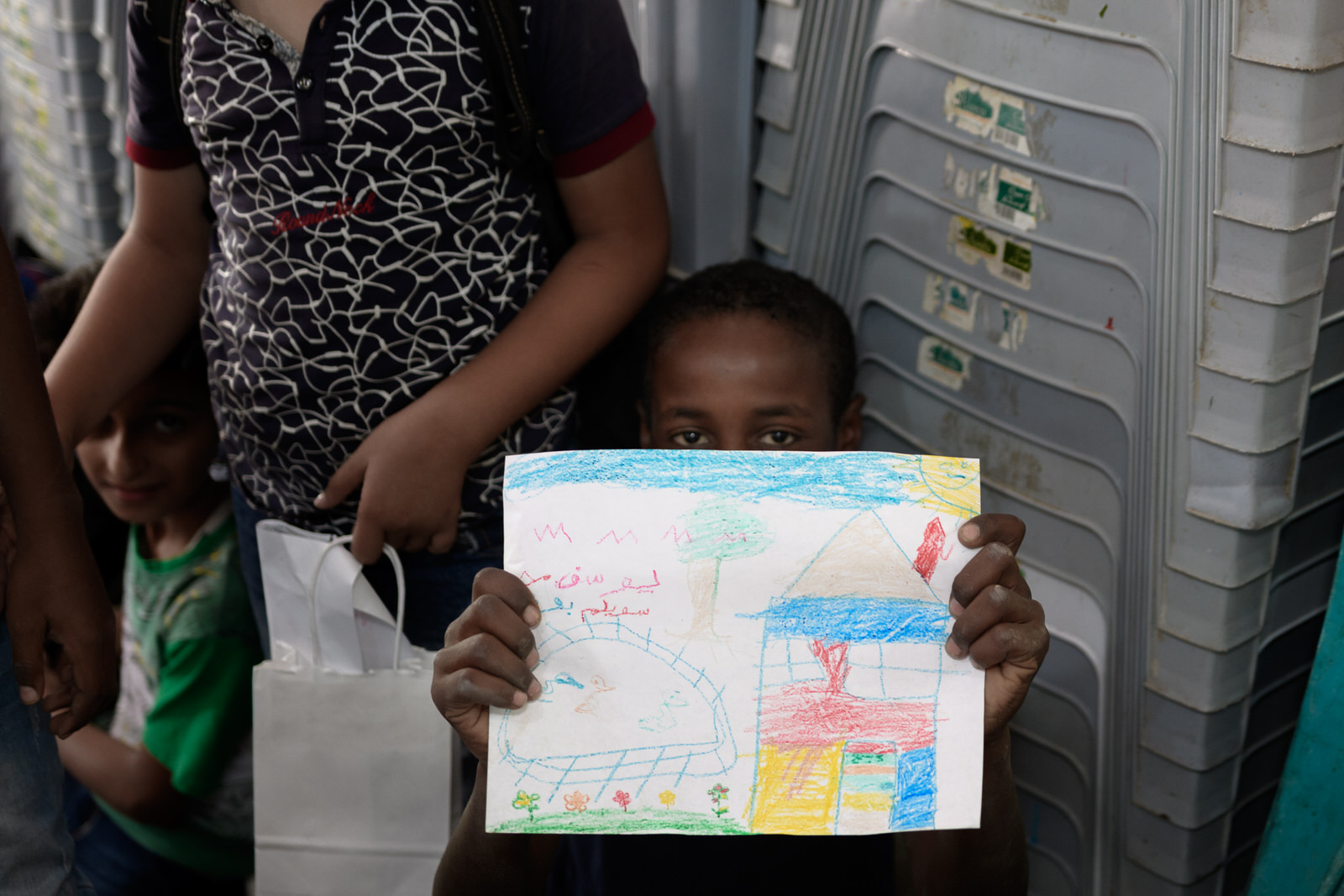
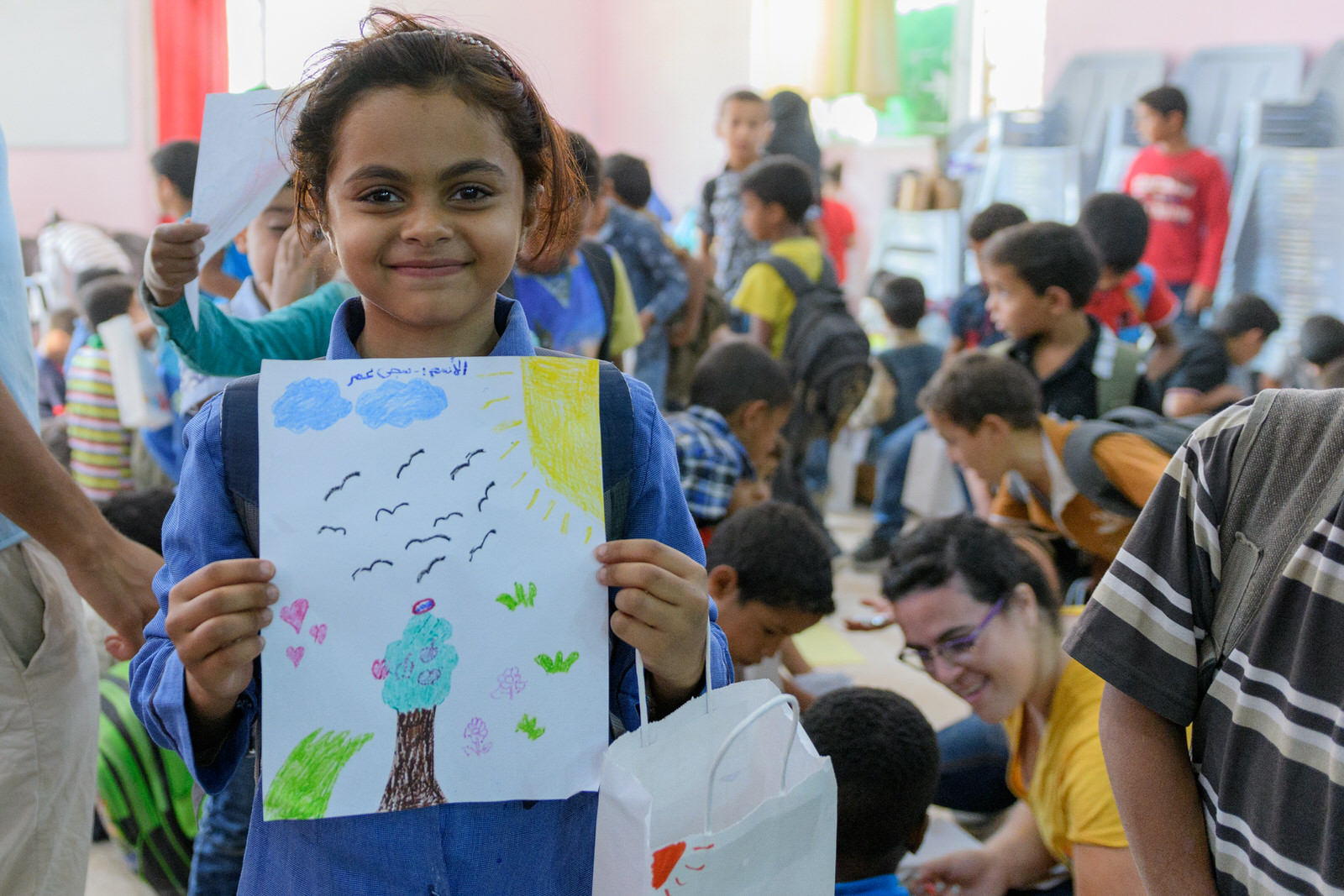
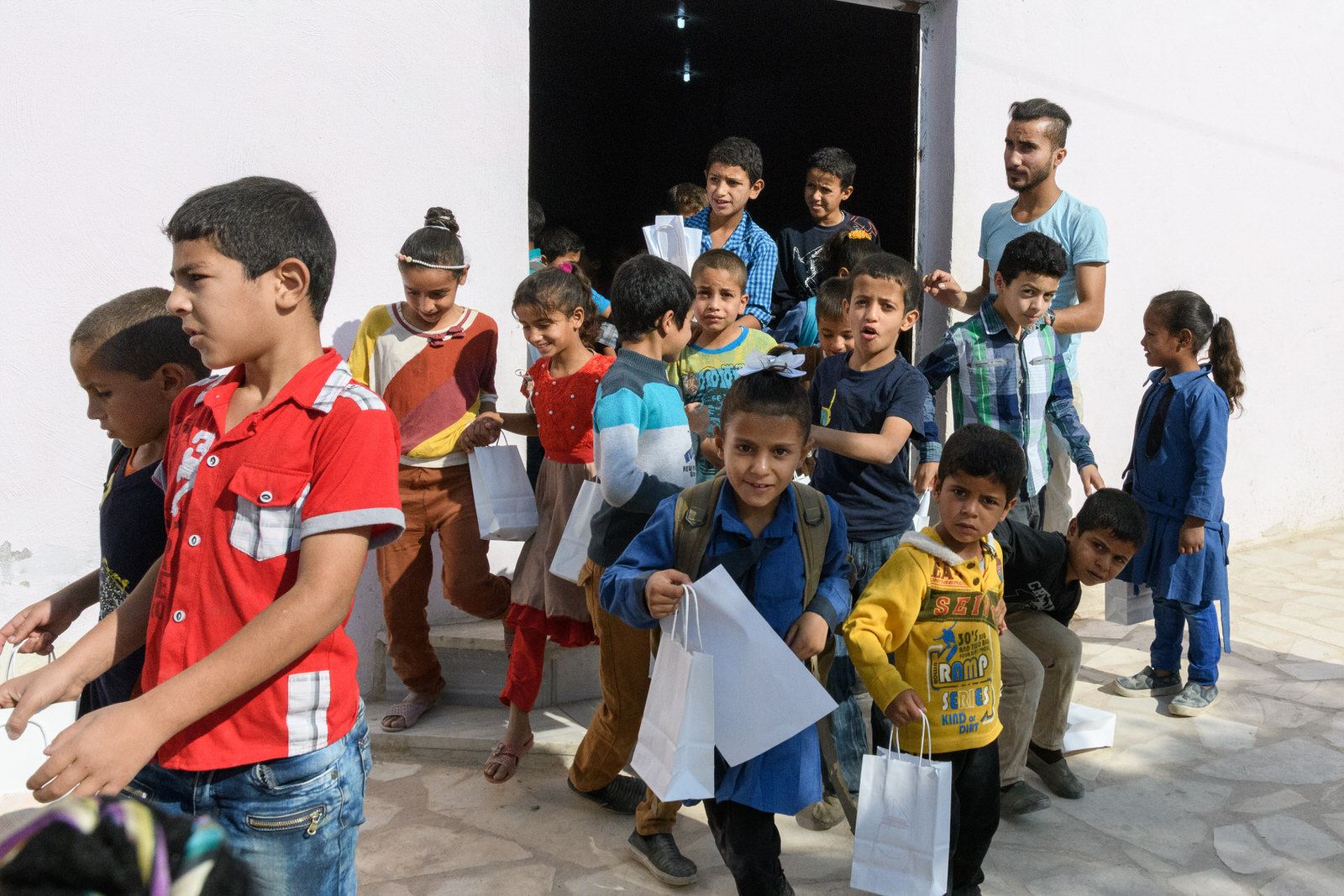

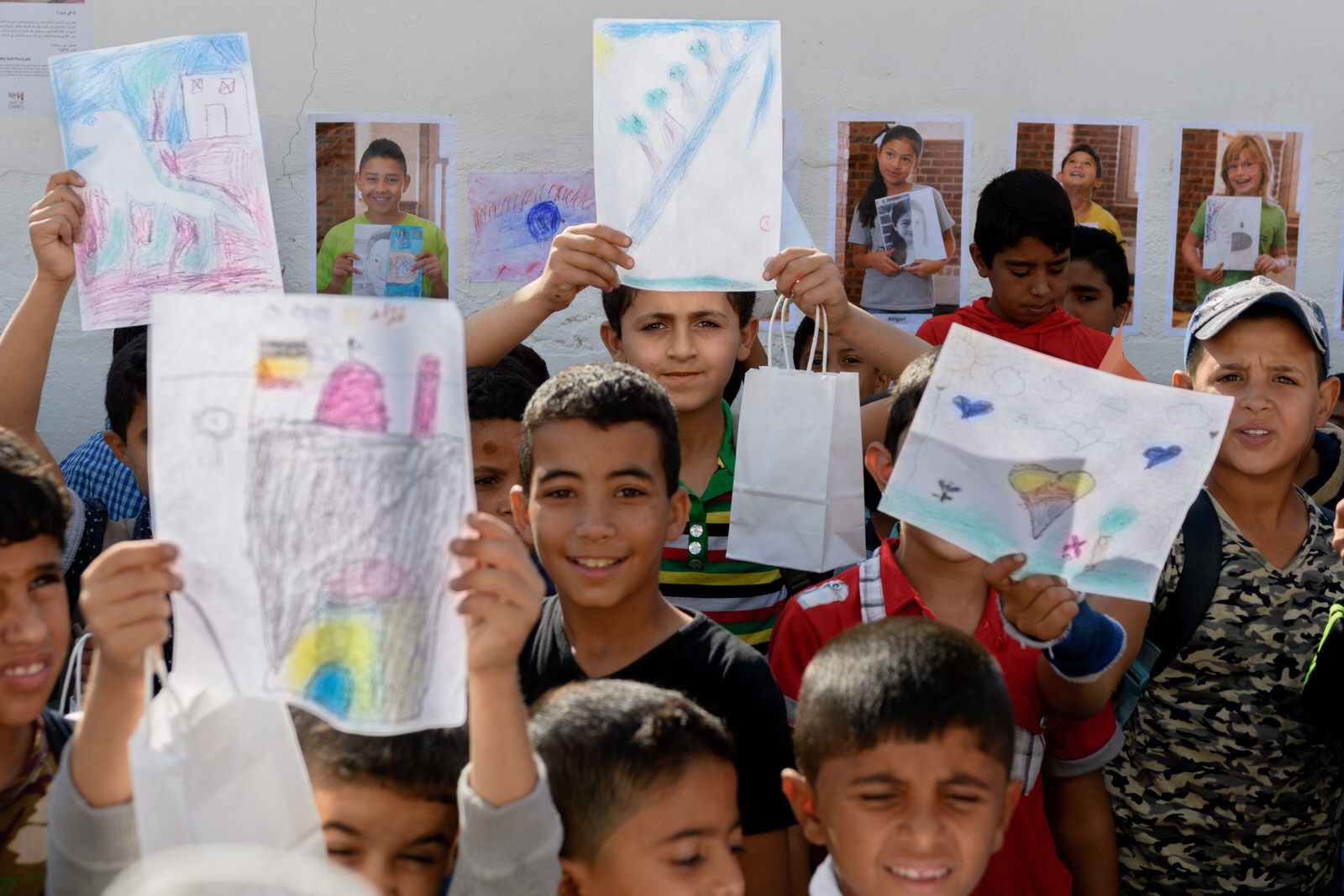
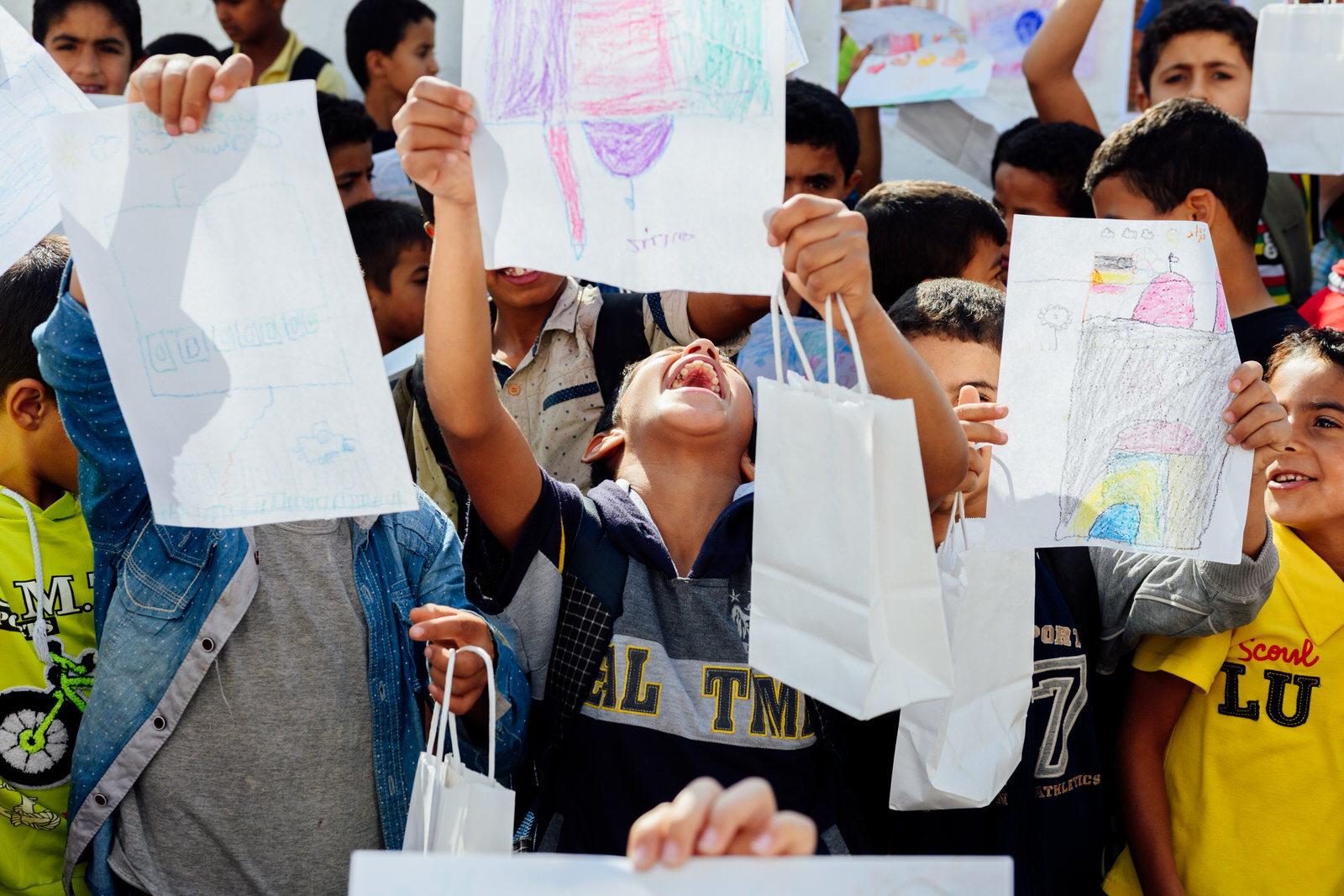


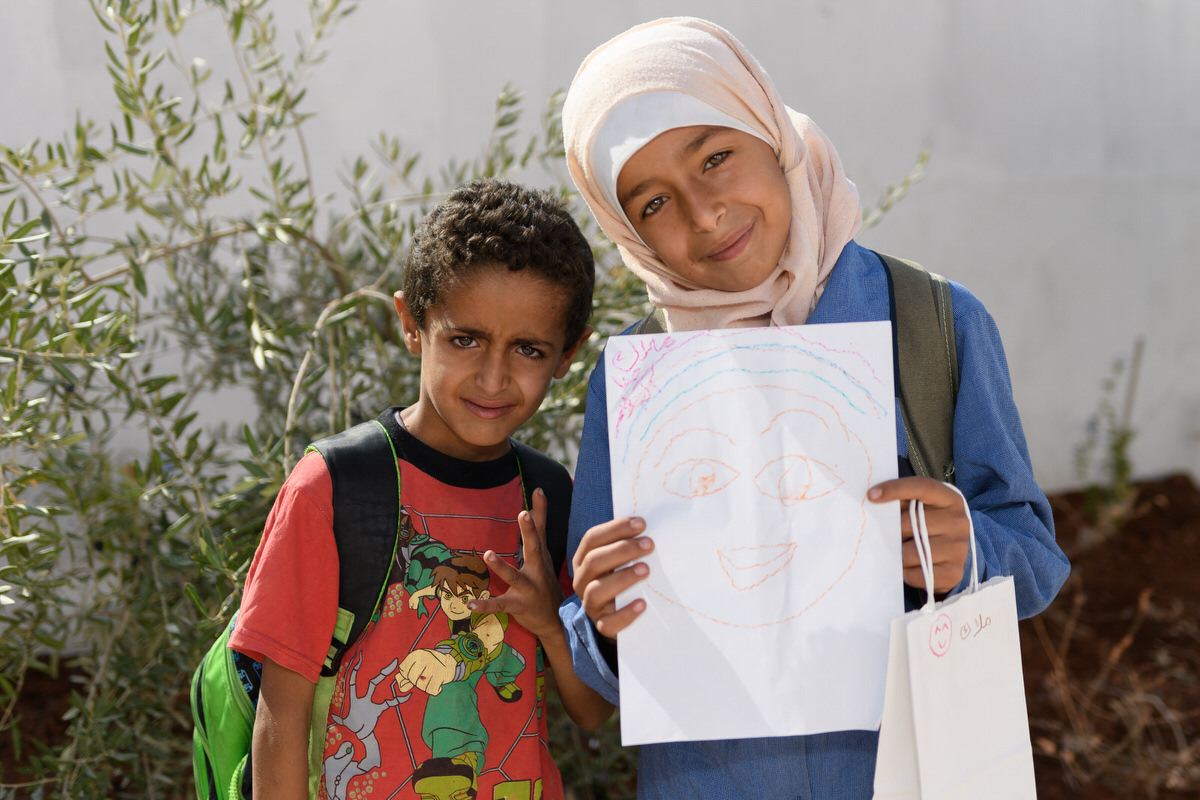


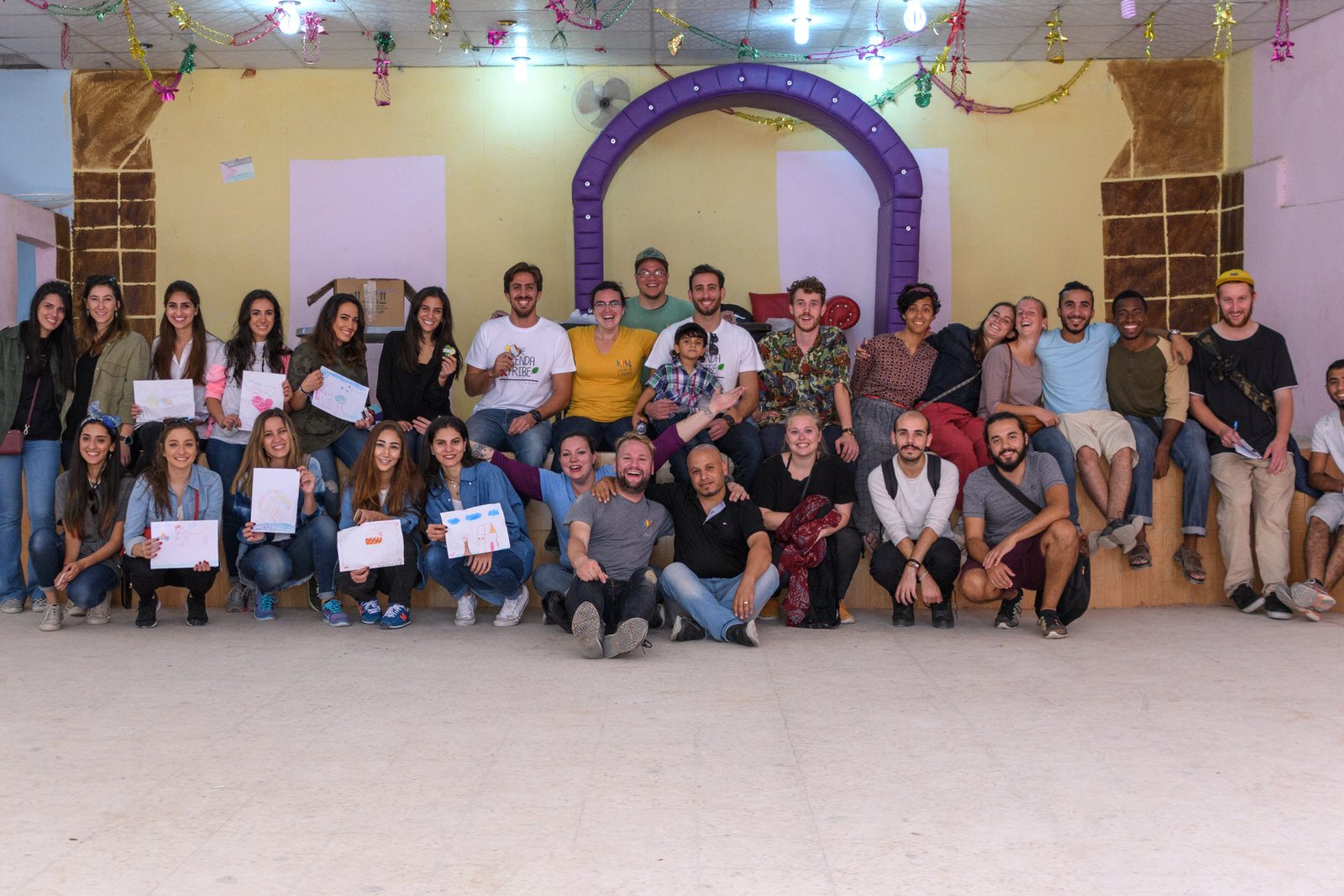
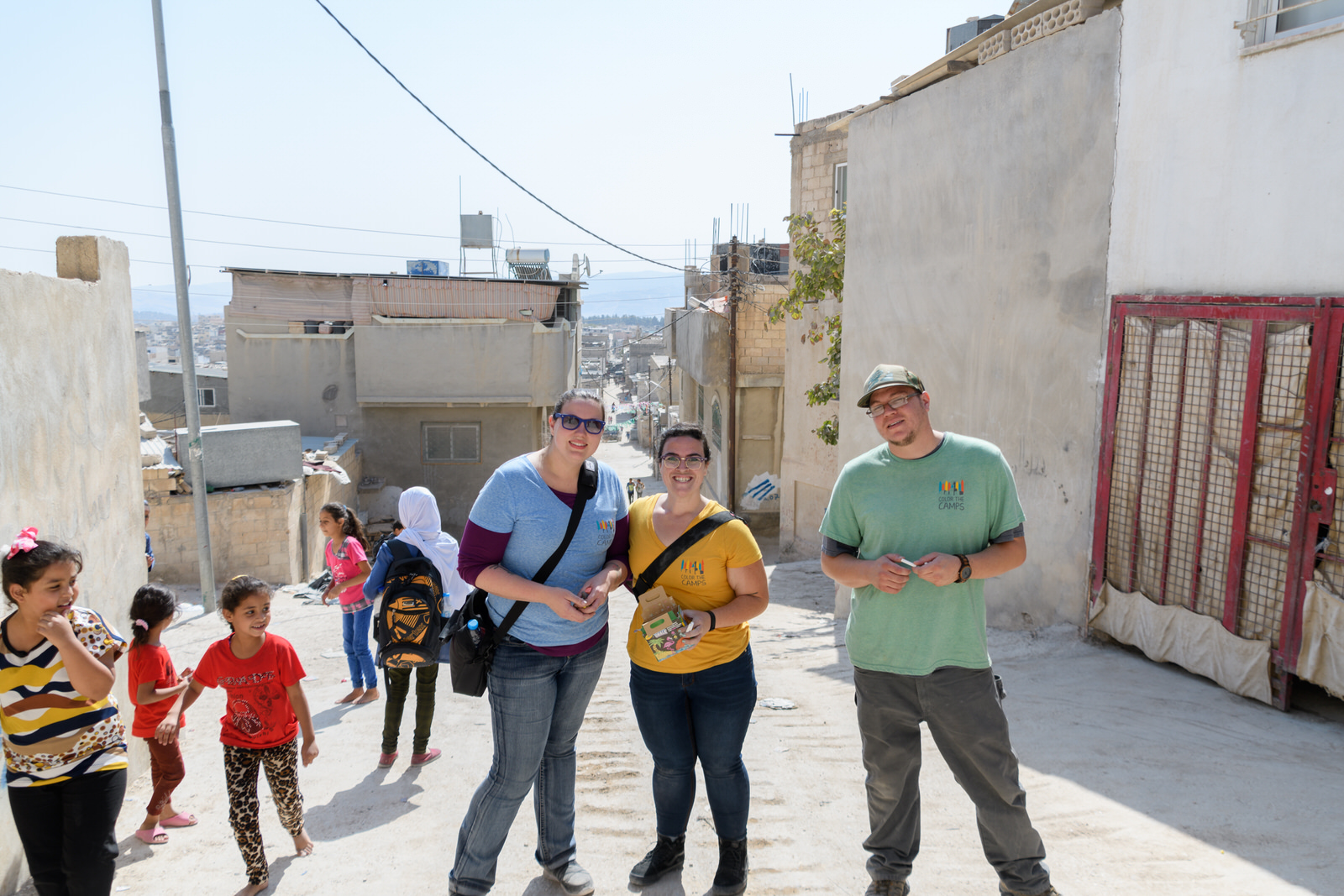
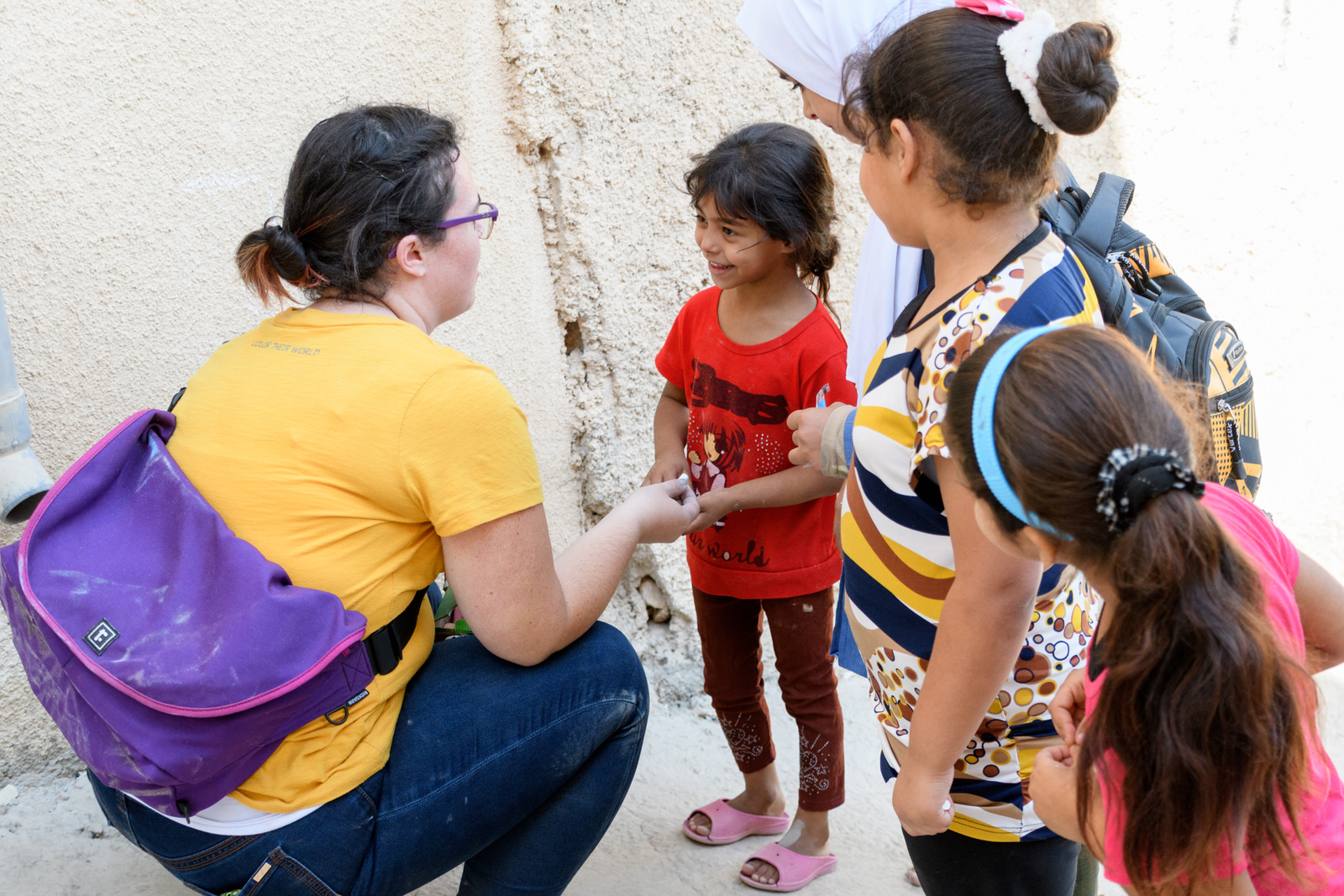
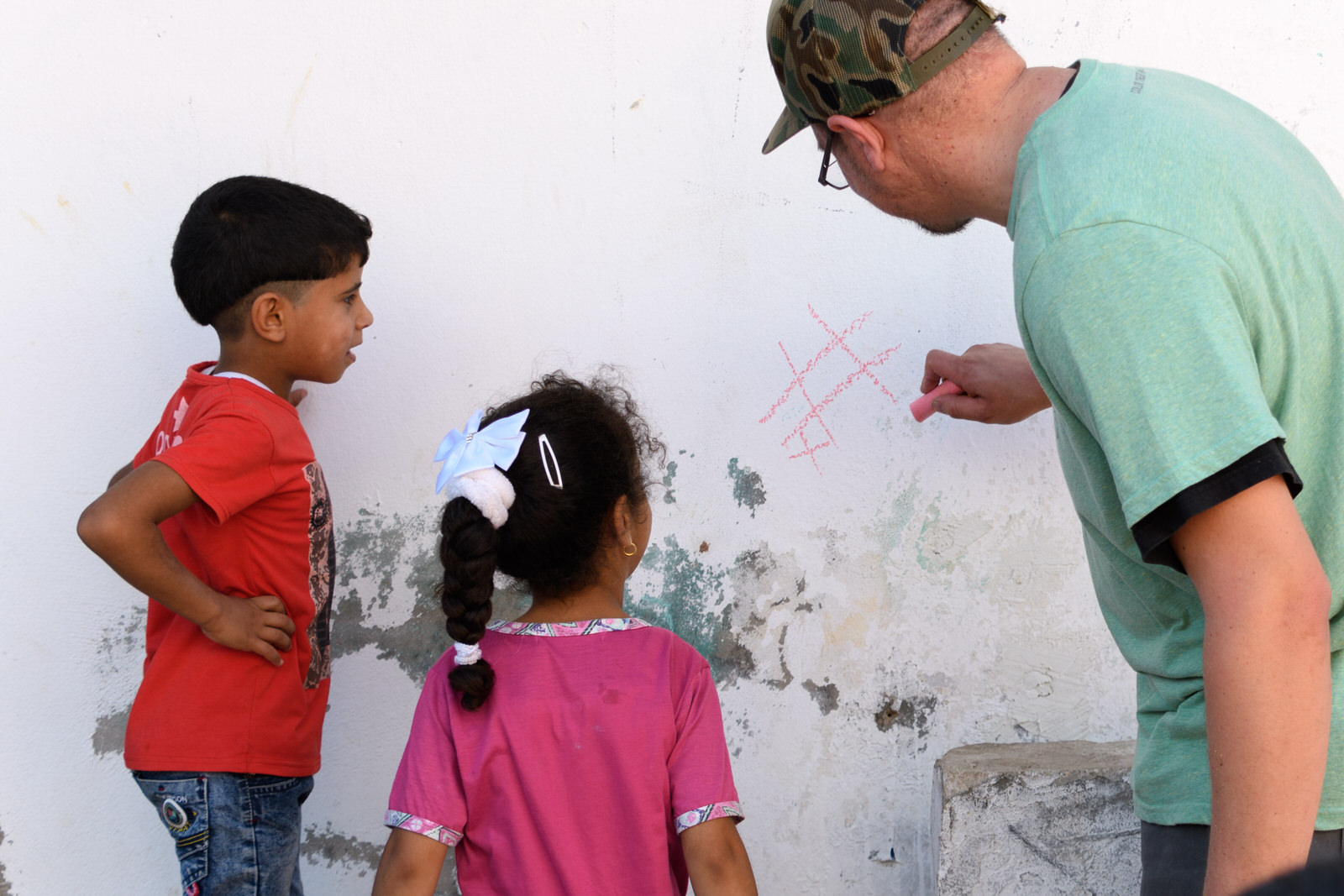
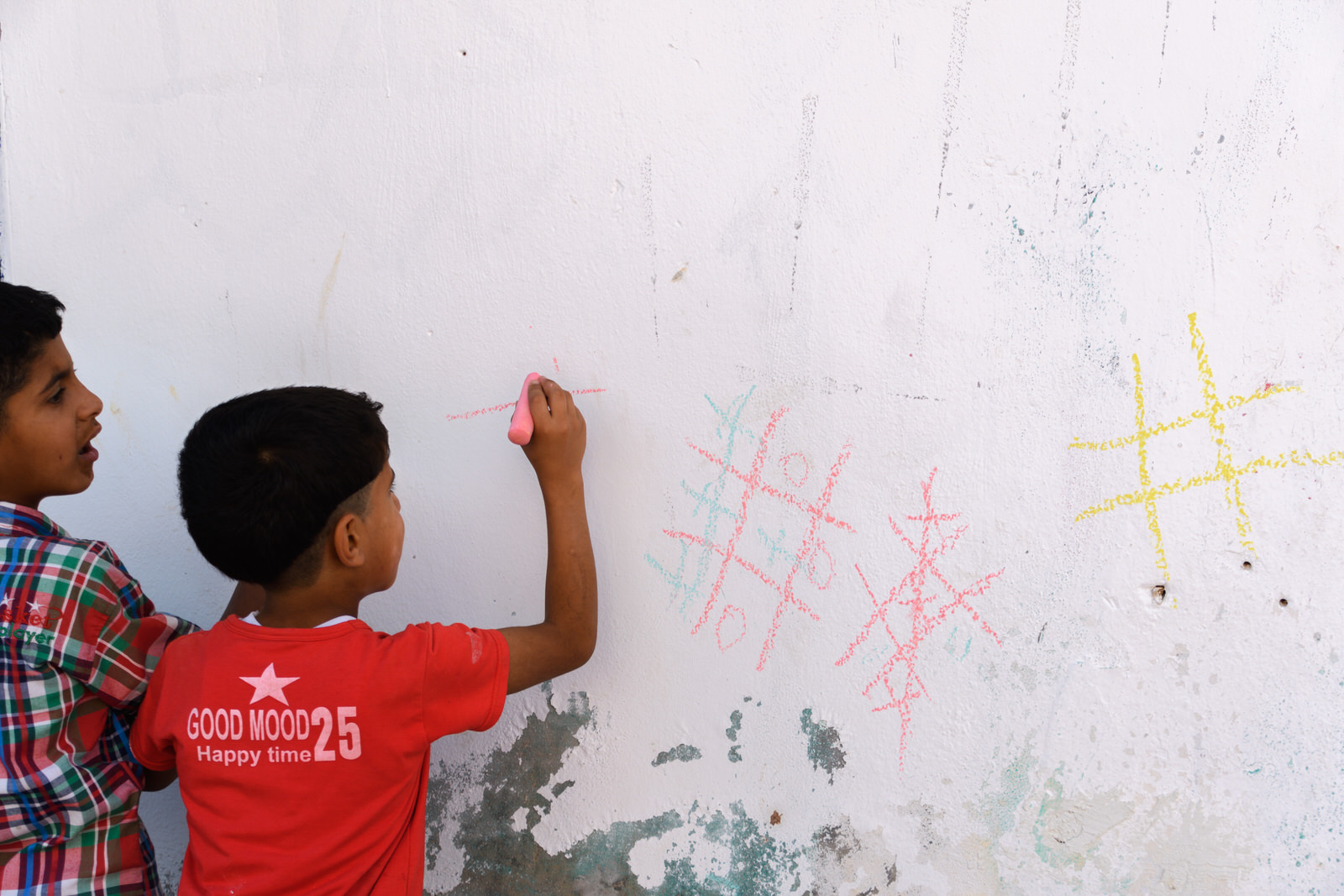



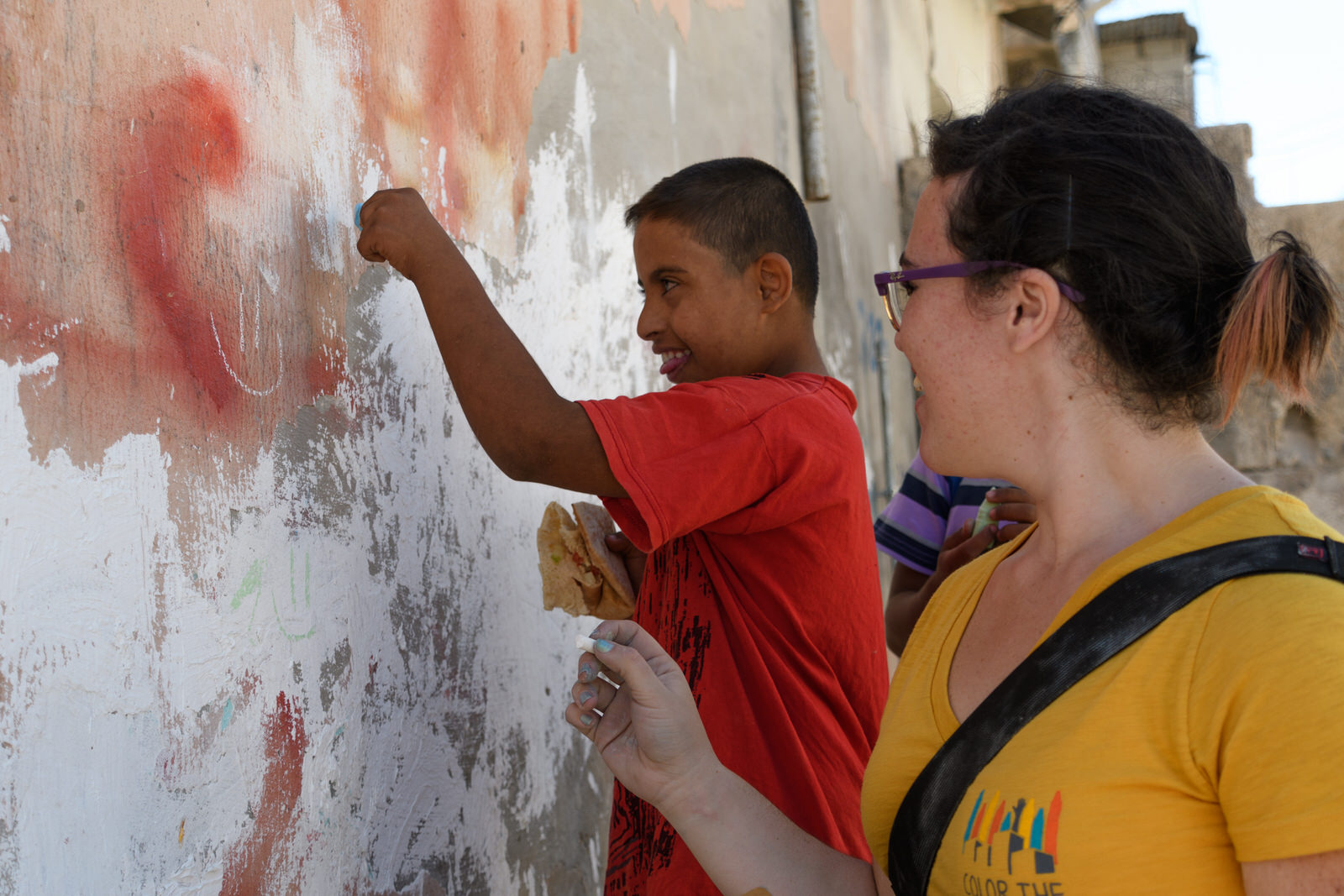
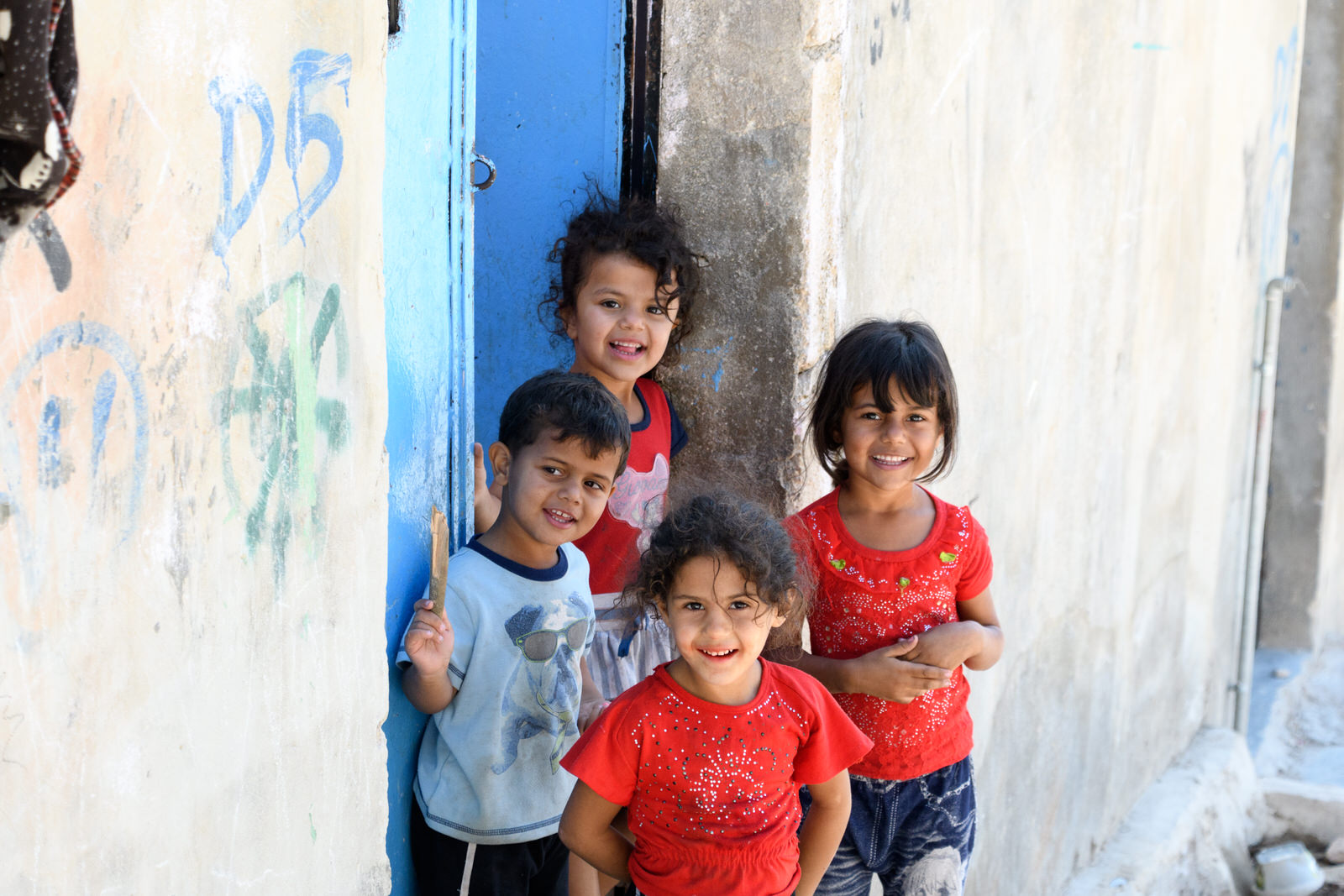
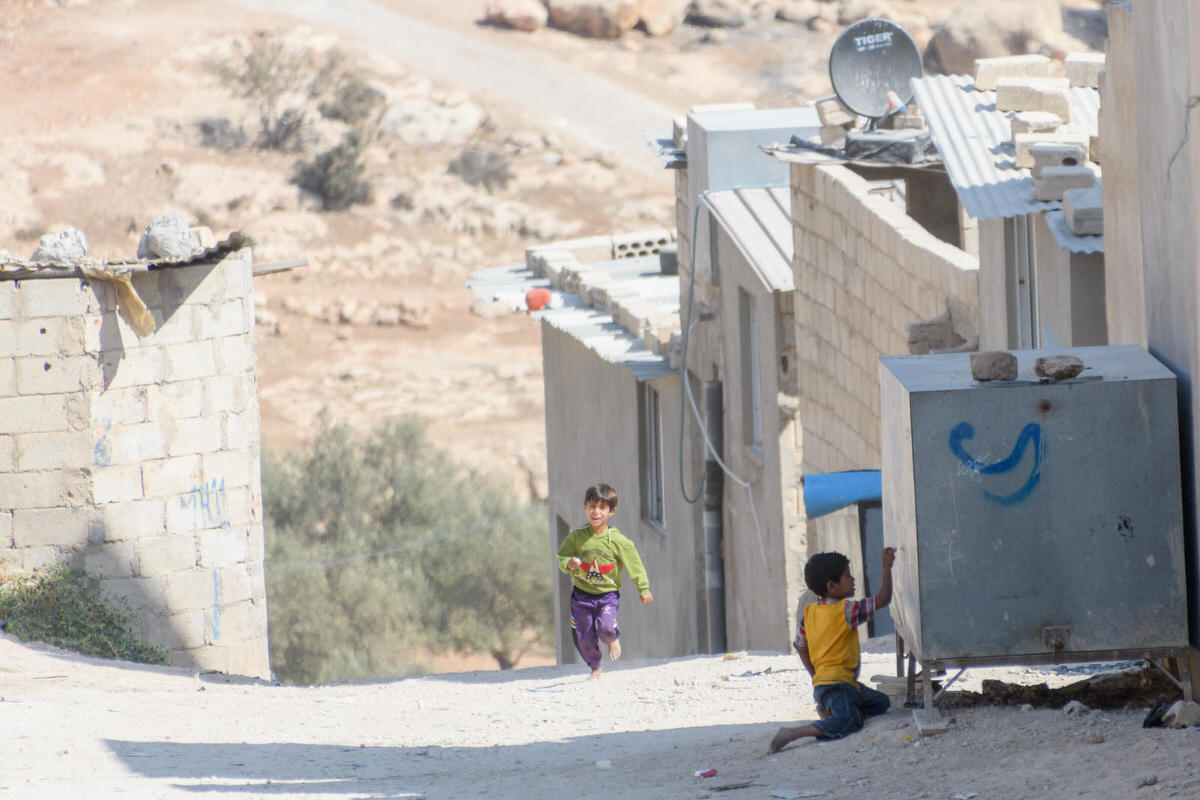
Project Bekaa
Dispersed along the border of Northern Lebanon and Syria exists informal refugee camps for those forced to flee their homes by foot across the snow capped Bekaa Mountains.
Surviving here means enduring the scorching summer heat and freezing winter snow without the most basic of needs like running water. While some children will work alongside their parents in nearby fields many are left unattended for days in the camp with nothing to nourish their creative minds.
200
Pounds of Rescued Crayons
500
Activity Packets and Masks
500+
Children Received Art Supplies
Preparation
The year following our first successful distribution I returned to Colorado for another short visit. While Betty and Chelsea laid the ground work back home, I had spent the last six months in Lebanon finding our next camp near the Syrian border. These informal refugee camps are home to children who have faced unimaginable trauma during the early years of their life and escaped by foot with their families across mountains in the cover of darkness. These children were now surviving in difficult conditions in a country that generally does not accept them⁶.
These camps were not only difficult to locate but also a challenge to reach safely. In an effort to prevent any permanent structures and future refugees from coming into the country, these camps were often raided and destroyed by Lebanese officials⁷. This meant entire camps could disappear in a day. Traveling to these camps was also a challenge because it meant passing though various military checkpoints in places where foreigners don't often travel alone. Our mission from the beginning was to help children who did not have access art supplies and this often meant finding a camp where there was no aid present or any outside help. During this time of searching I met our partner Janane of TM Lebanon. She had been working in one particular camp to establish an elementary school. She knew of a camp nearby that one day she hoped to work in. We secured permission for our next coloring party and once again I left Colorado with bags full of art supplies.
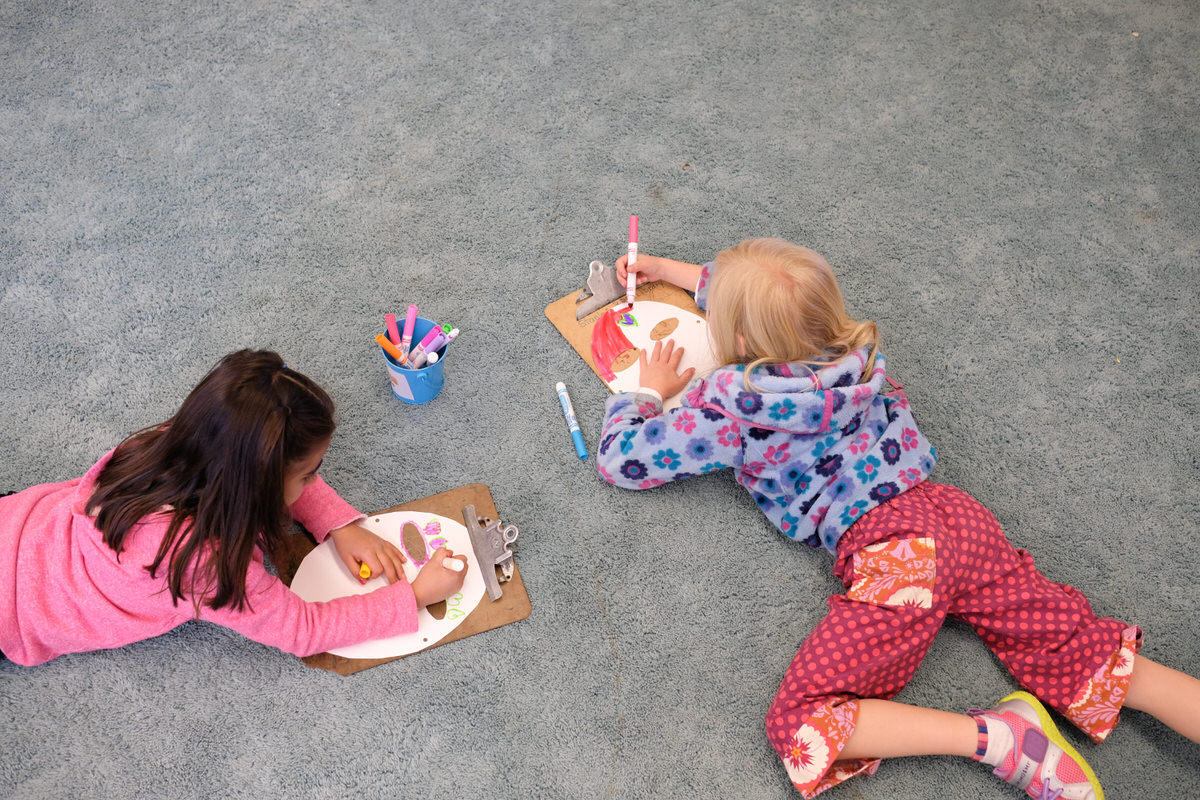

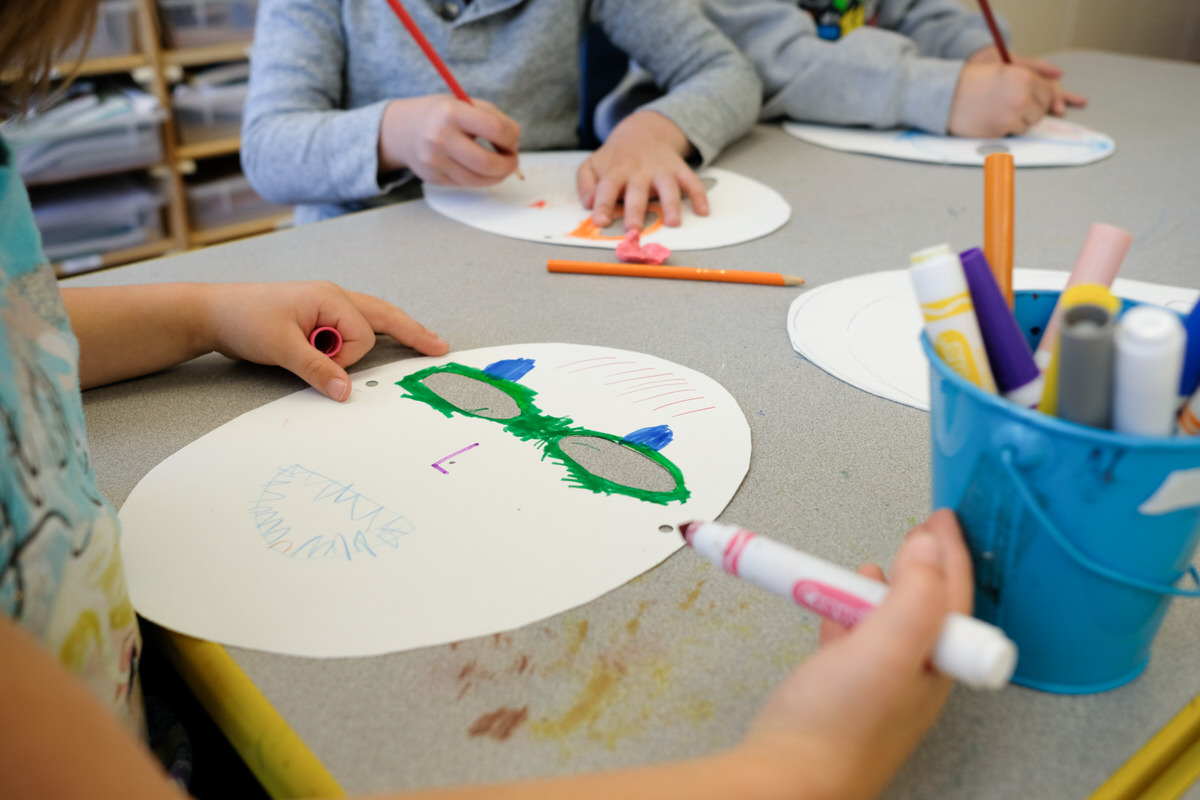
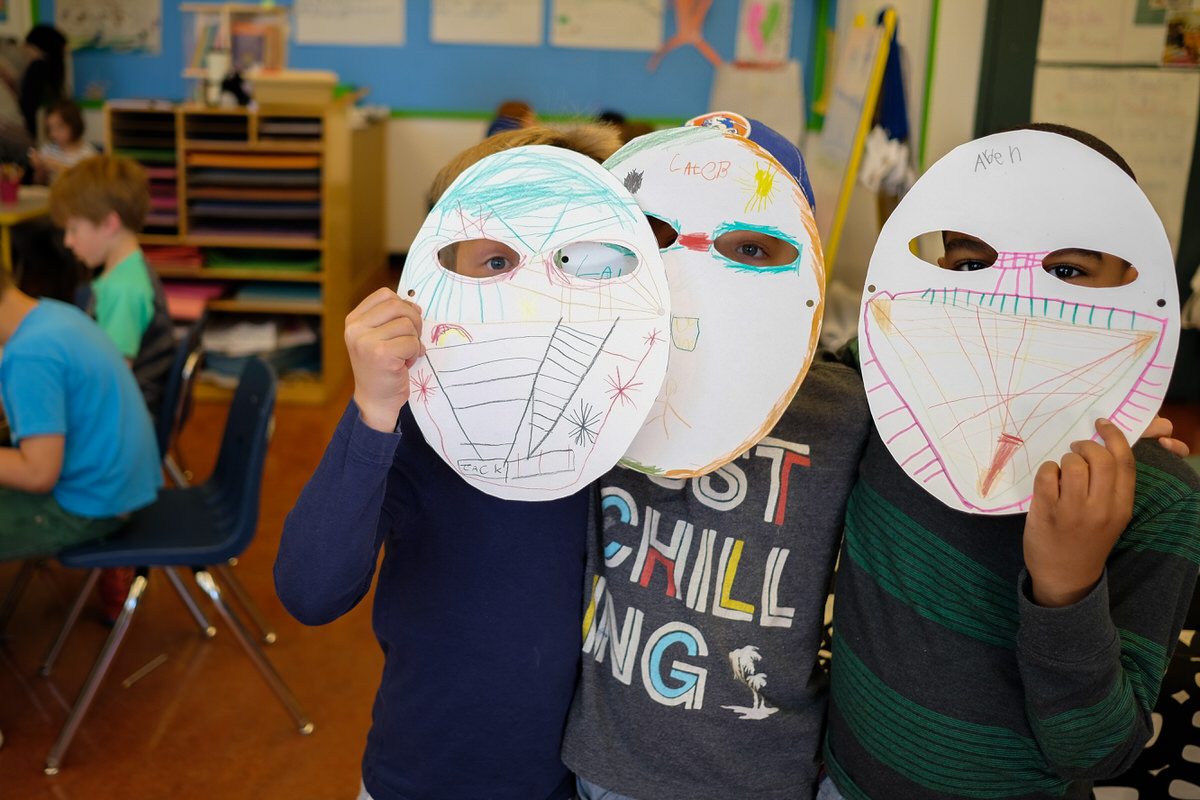

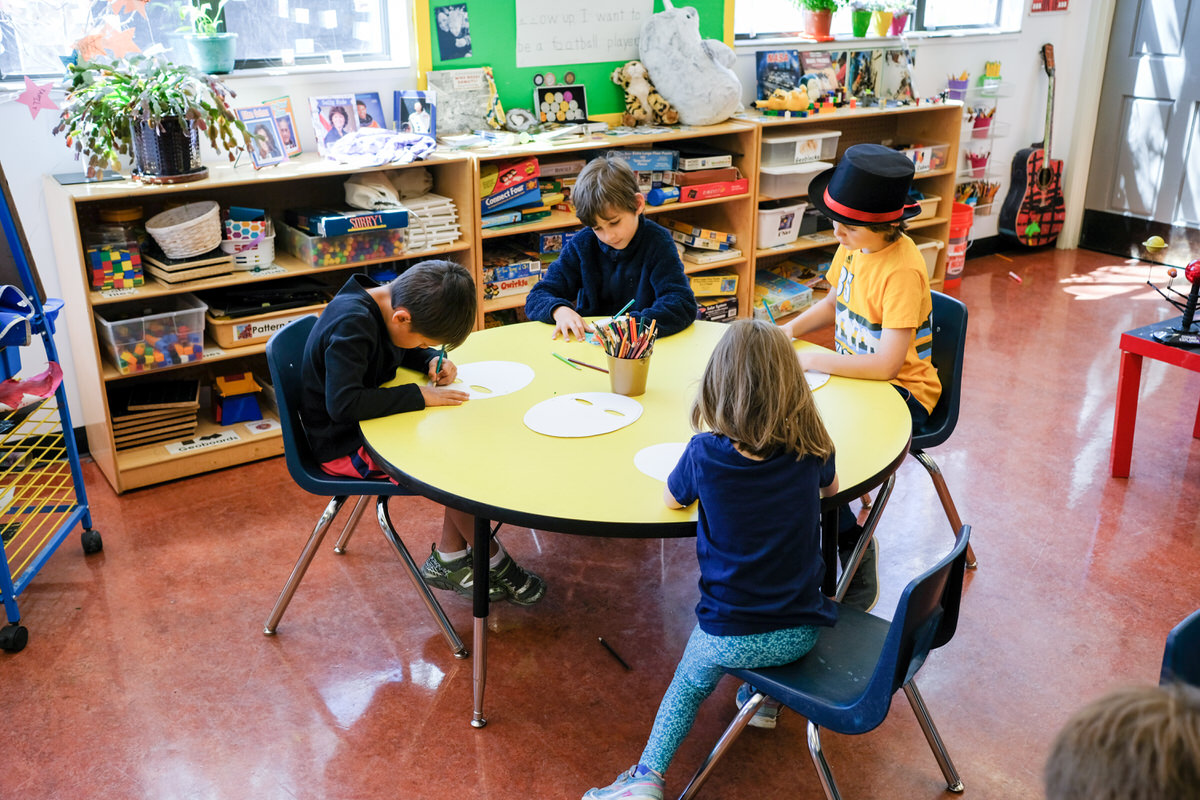
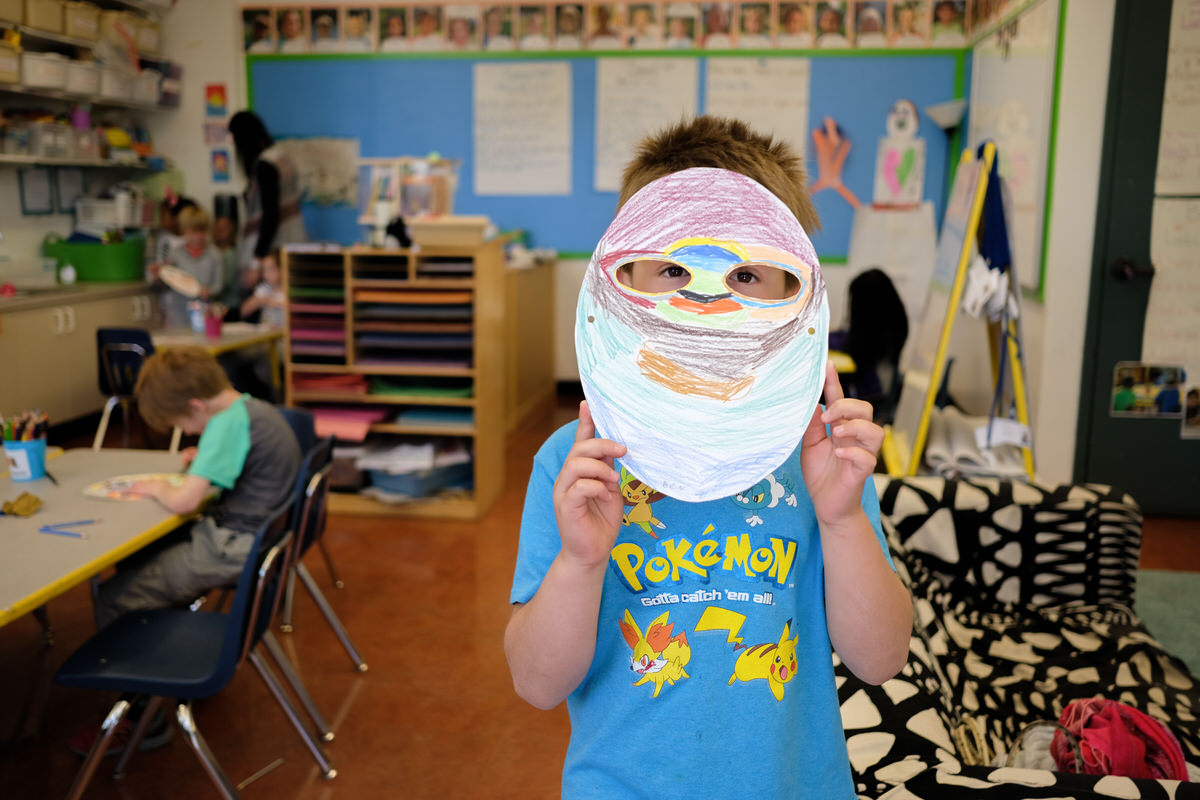
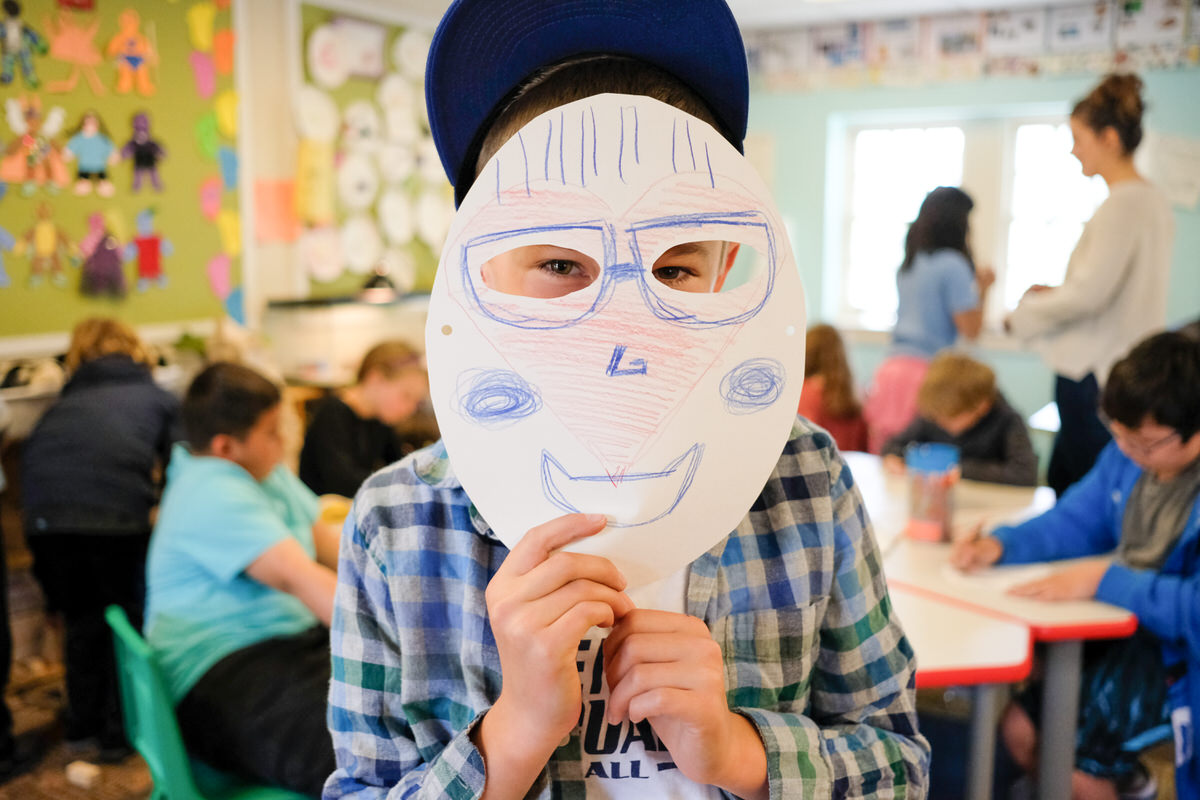
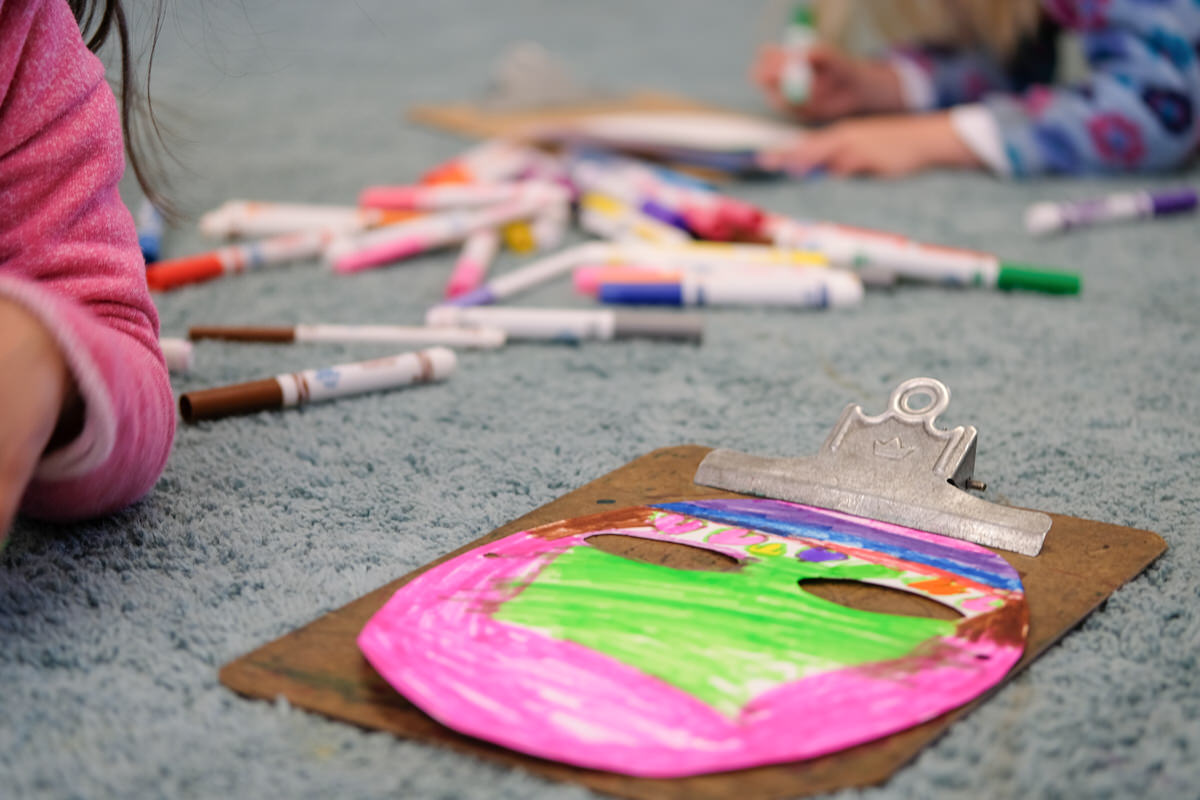
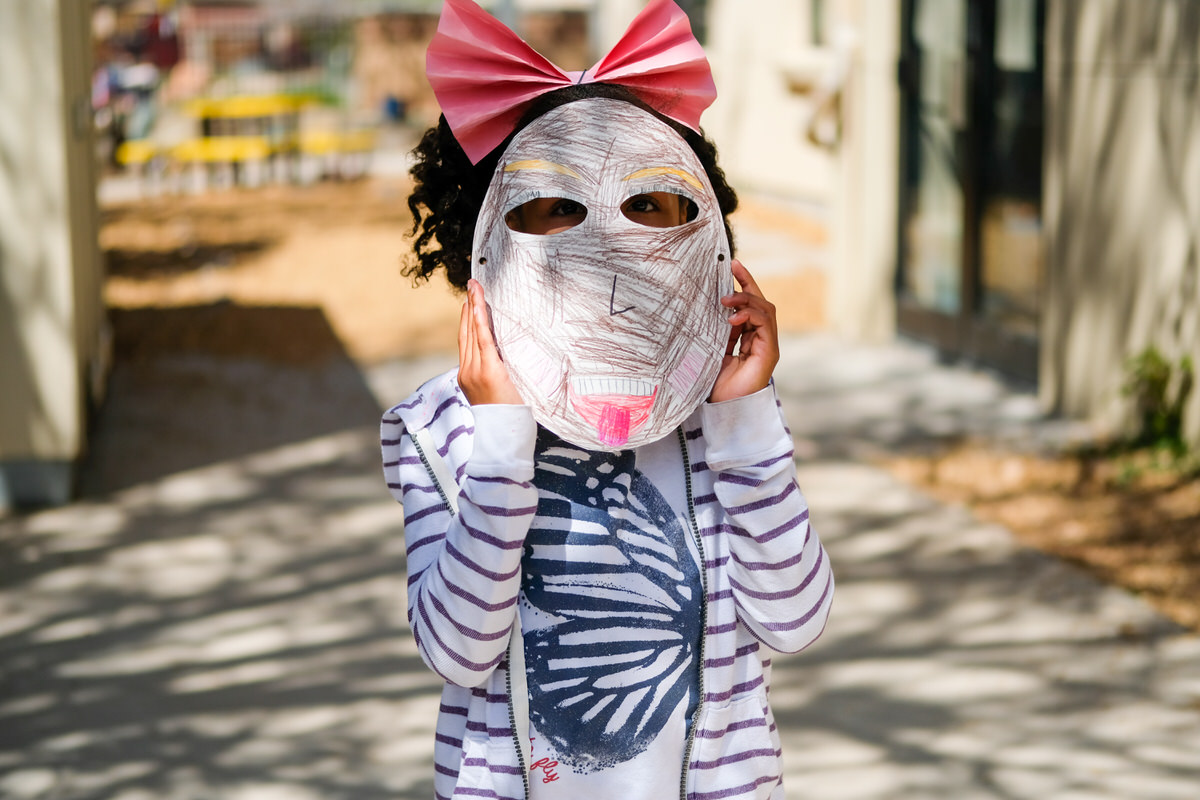
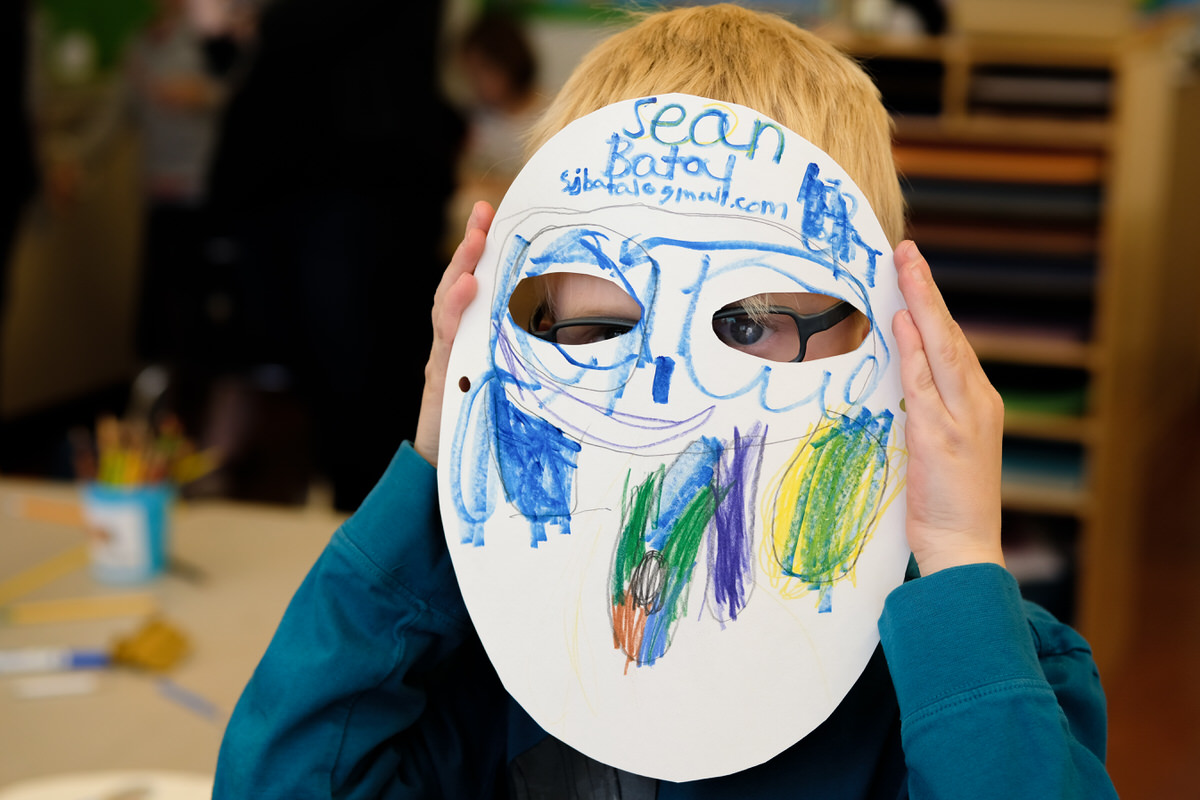
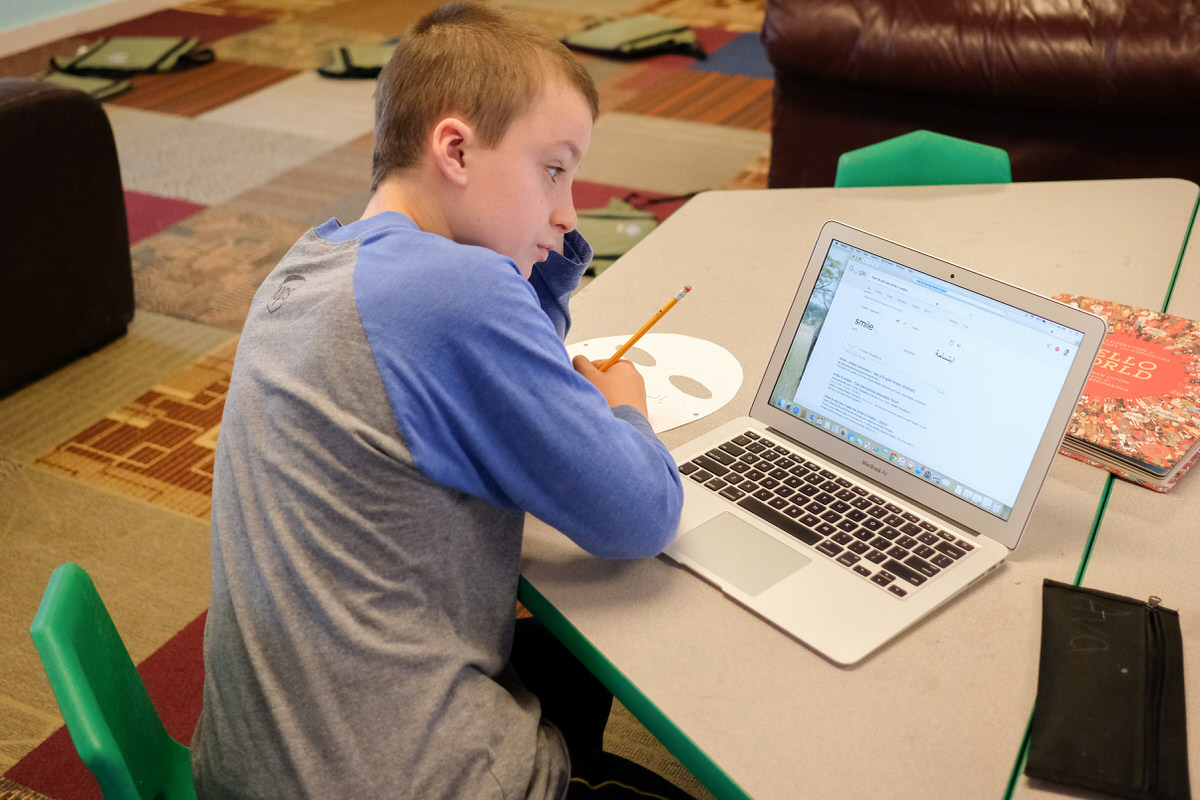


Denver Mask Coloring Party
We partnered with students age 7-12 in British Primary school, a public school in Denver. After teaching a class about young refugees we then asked students to creatively express themselves on one side of a blank paper mask. These masks would then travel to Lebanon where children in the camp could see the students' art and create their own on the other side. We were curious to see how children from both countries would interpret this exercise and how children in the Bekaa would react to seeing the art of another child. To our delight a lot of the children in the camp loved the art of the Denver students and could be seen wearing their side of the mask. It also helped to inspire their own art on the other side of the mask.
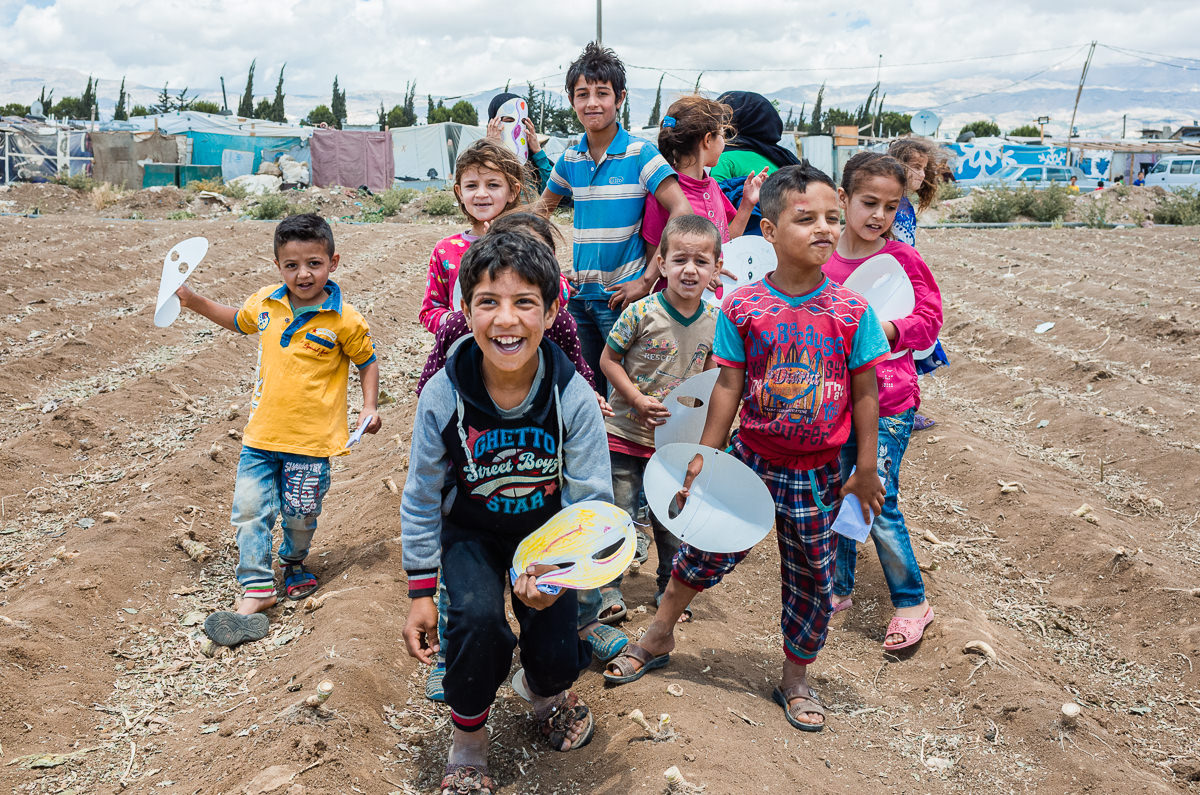

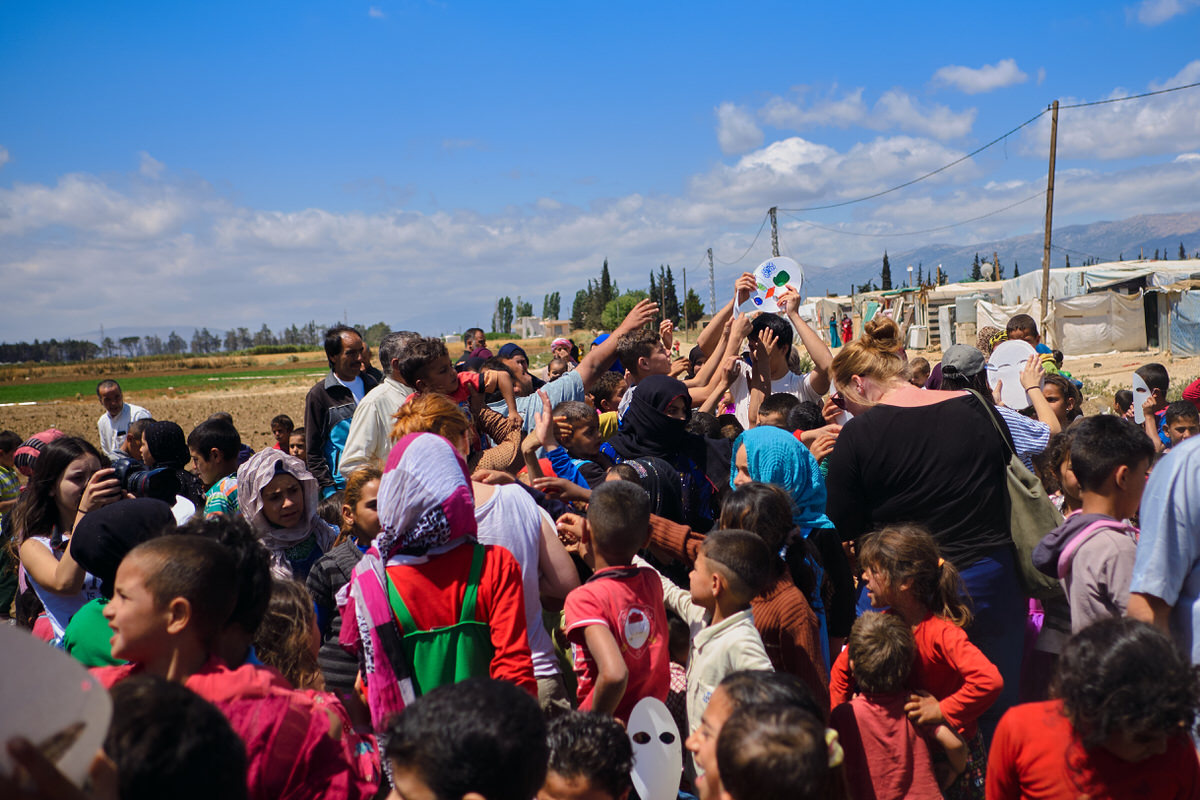
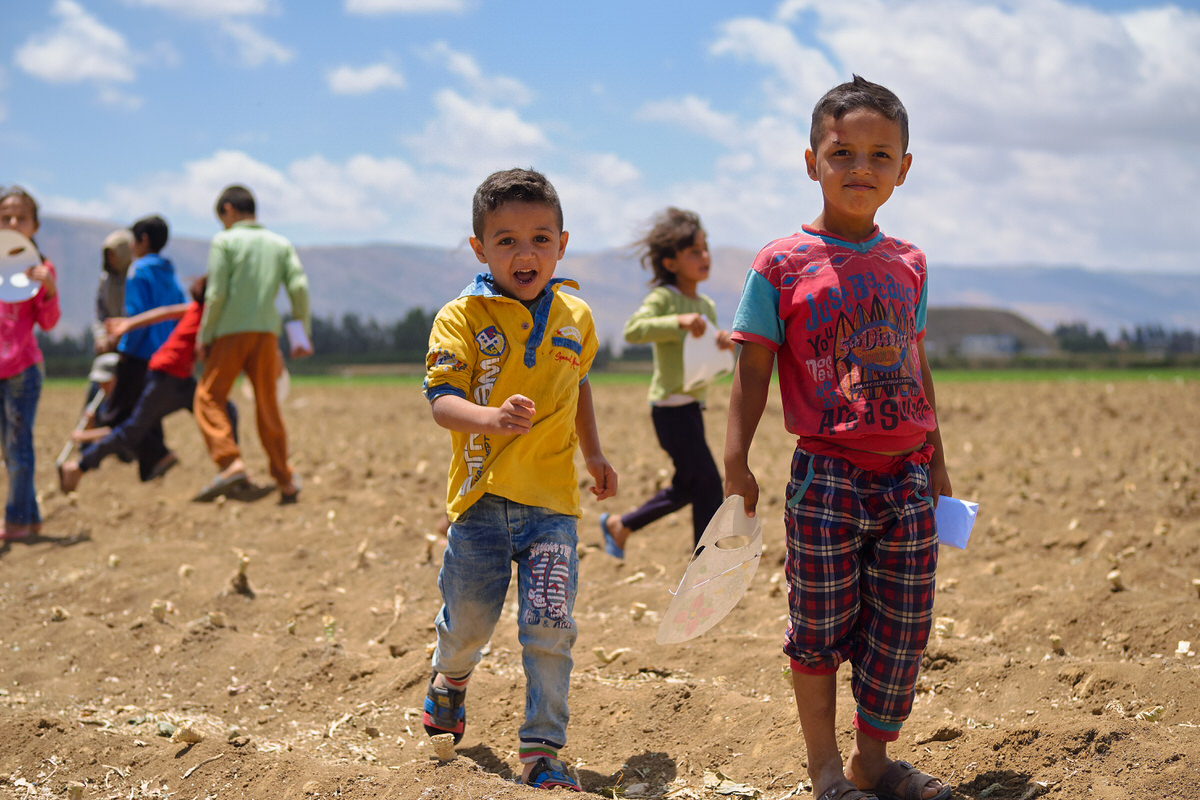
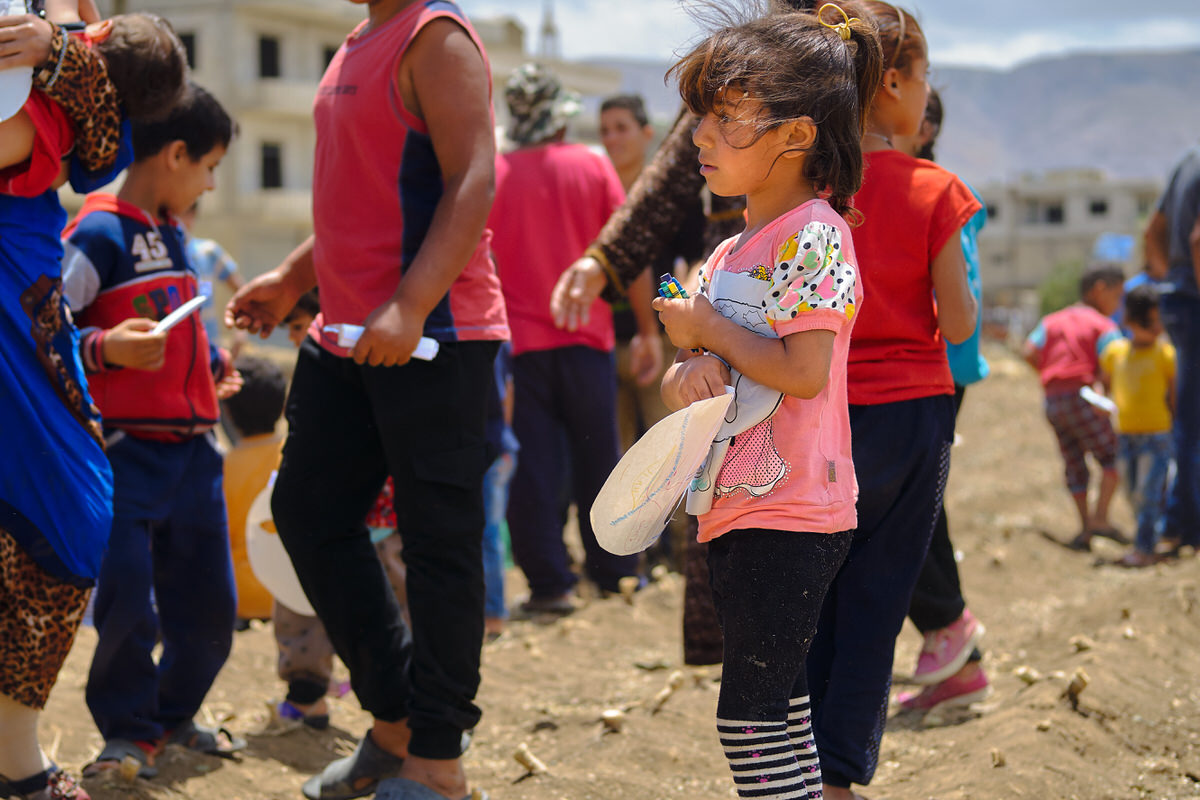
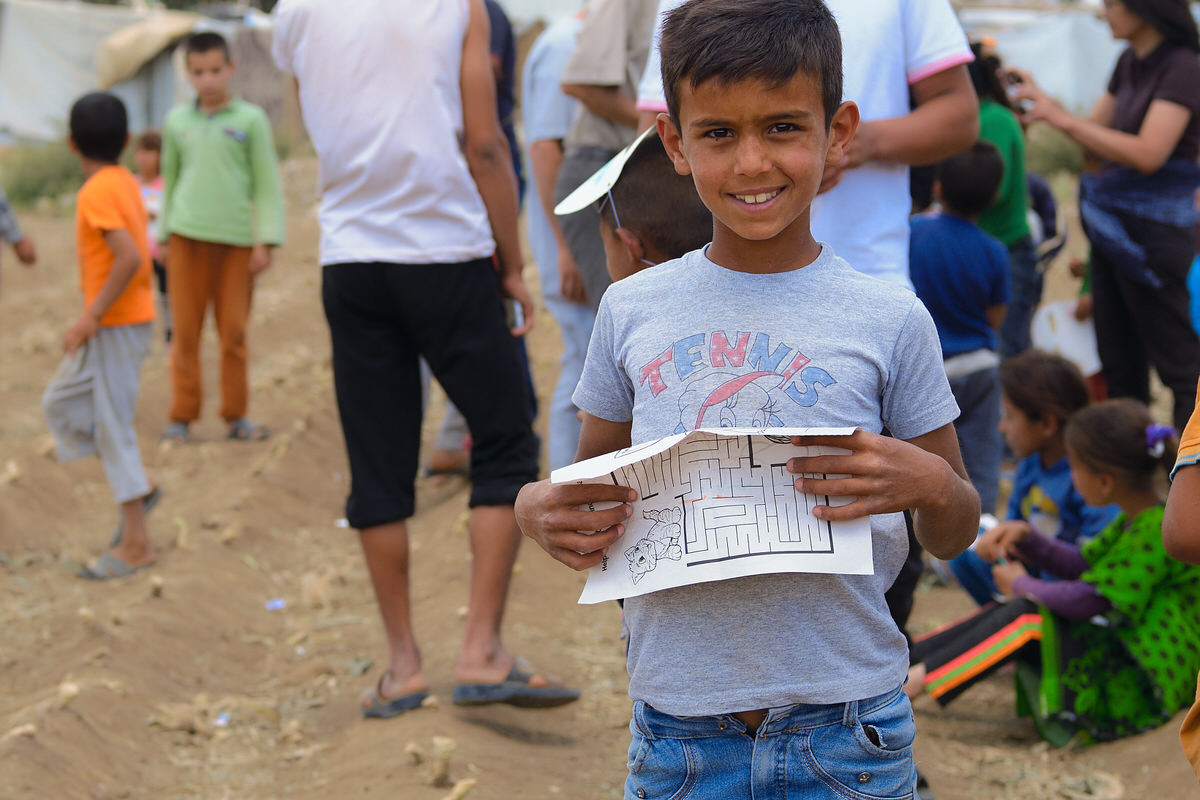


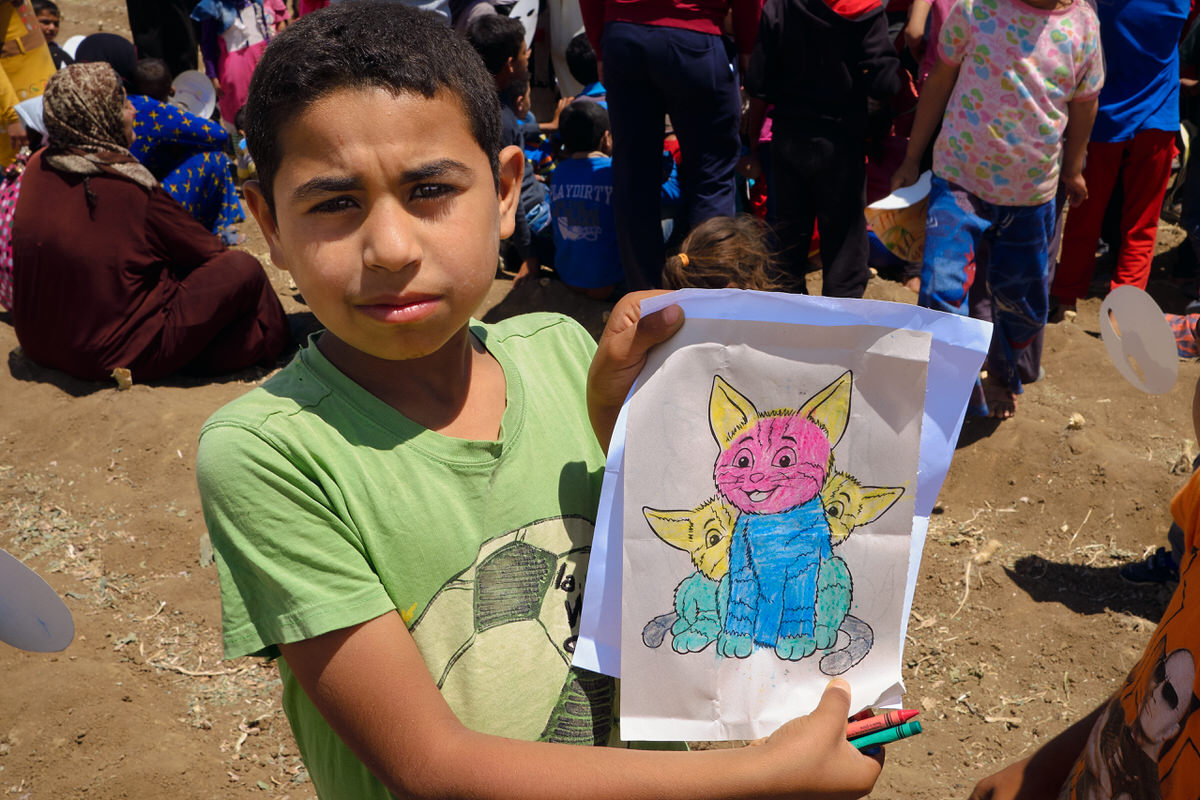
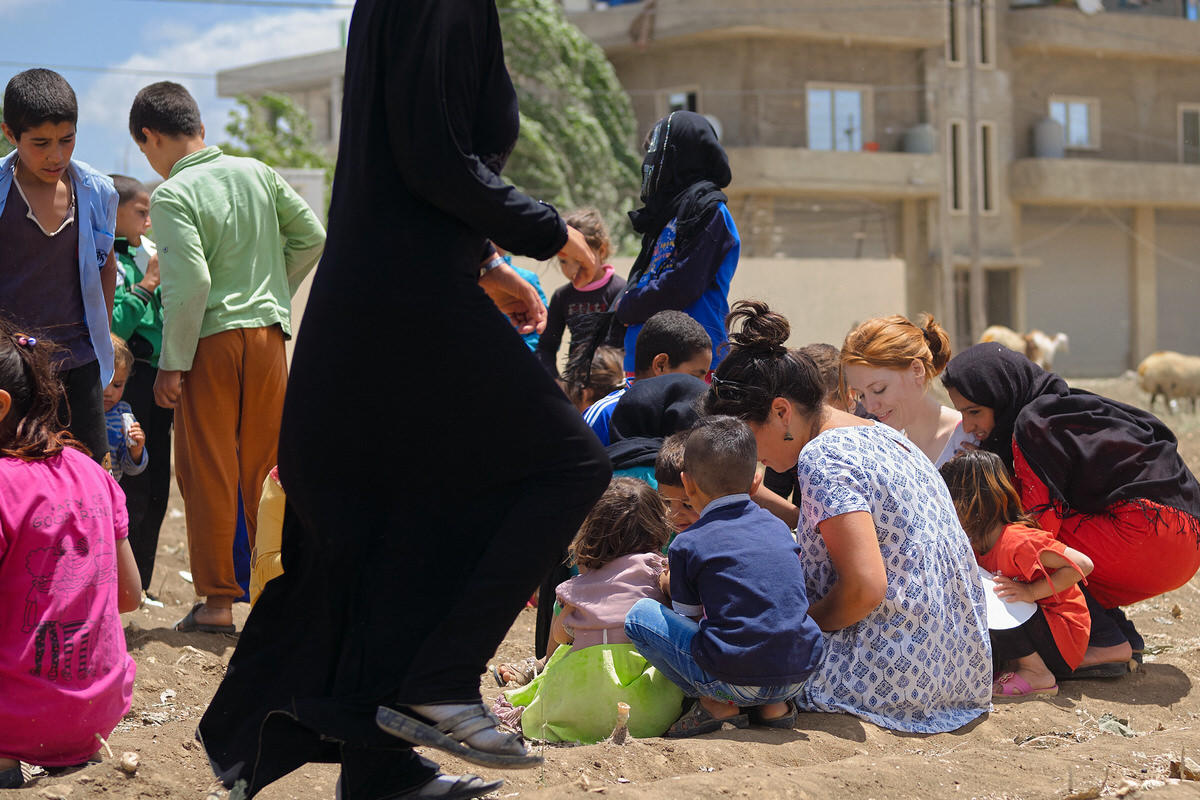
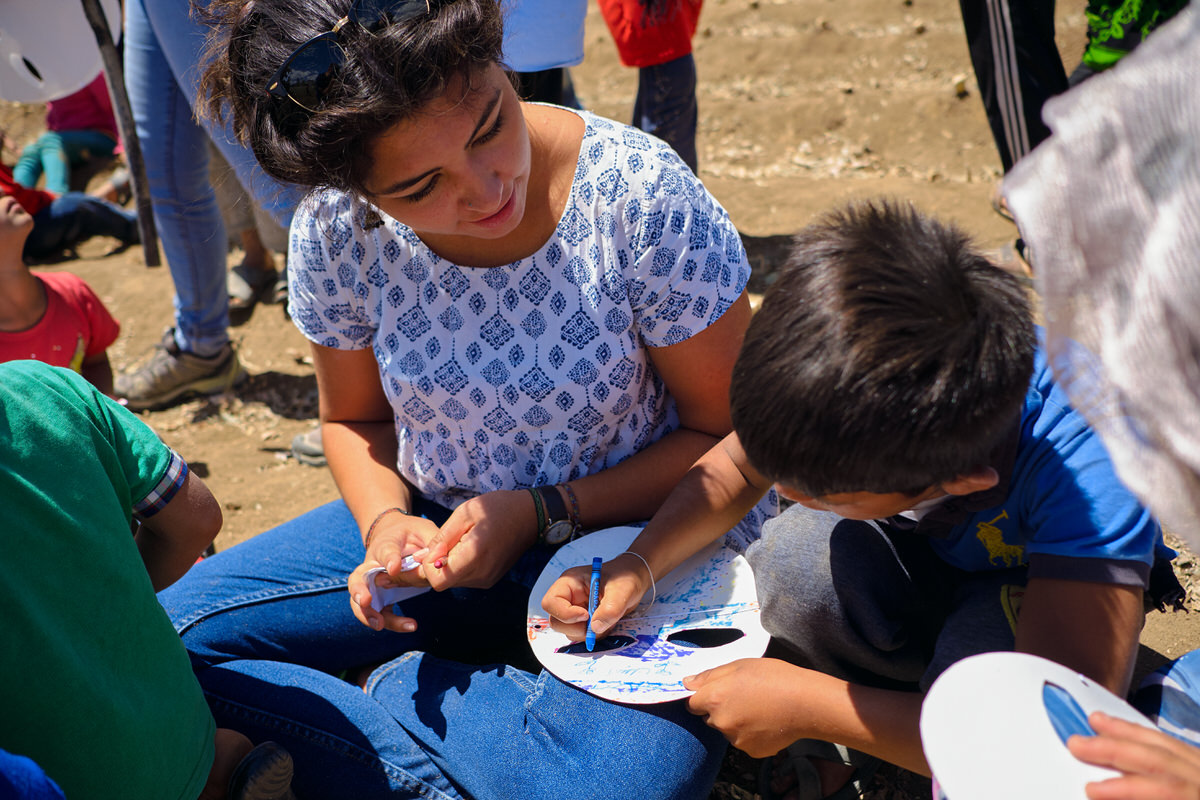
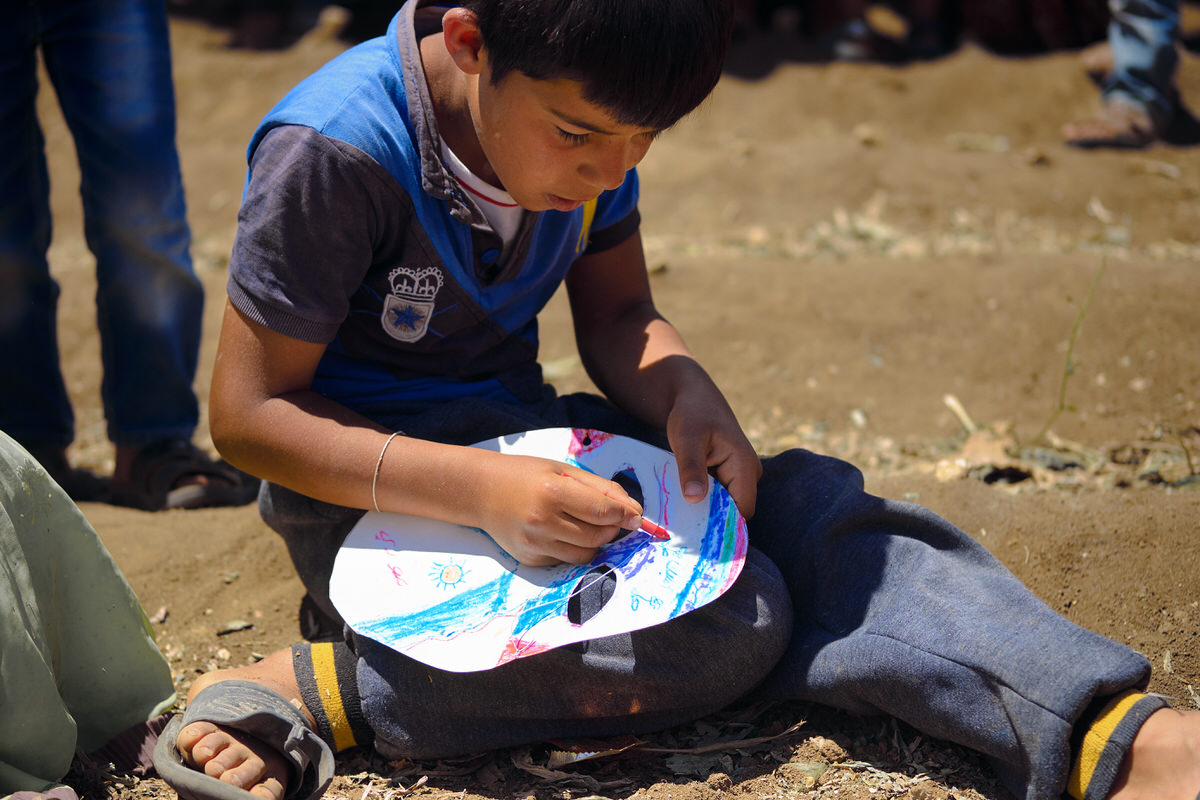
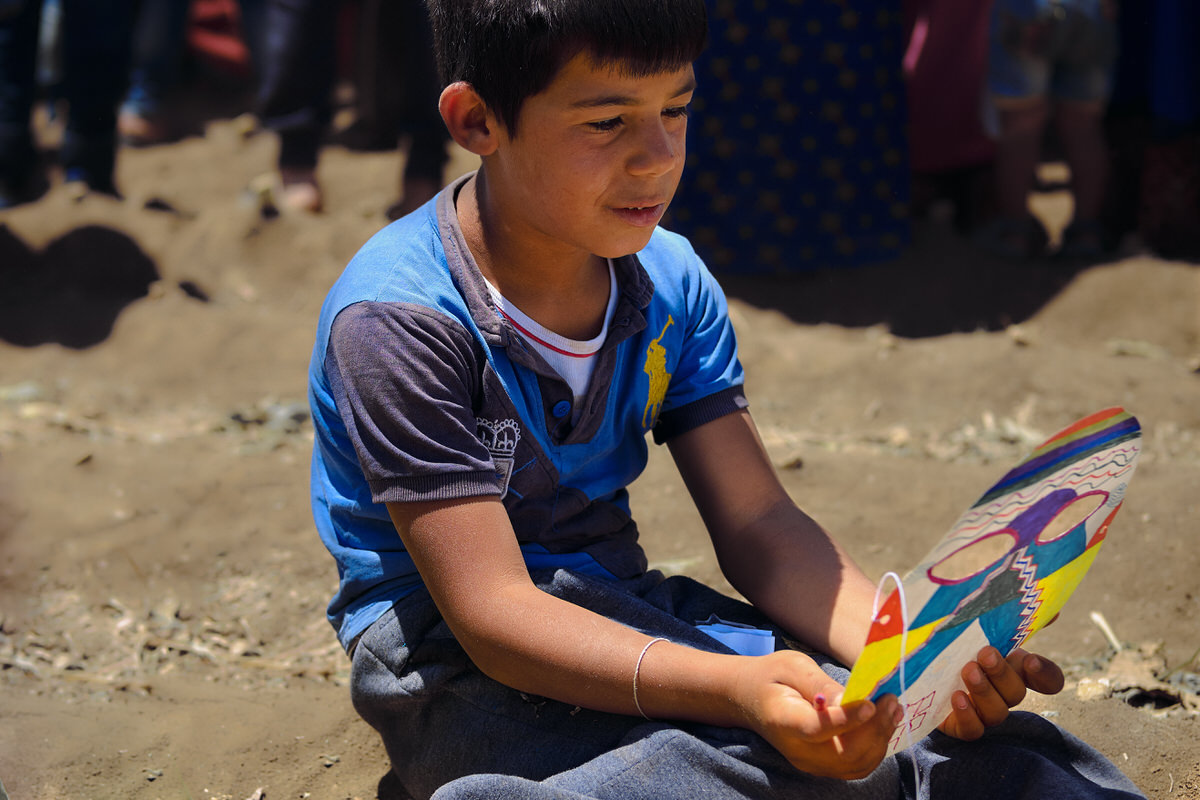
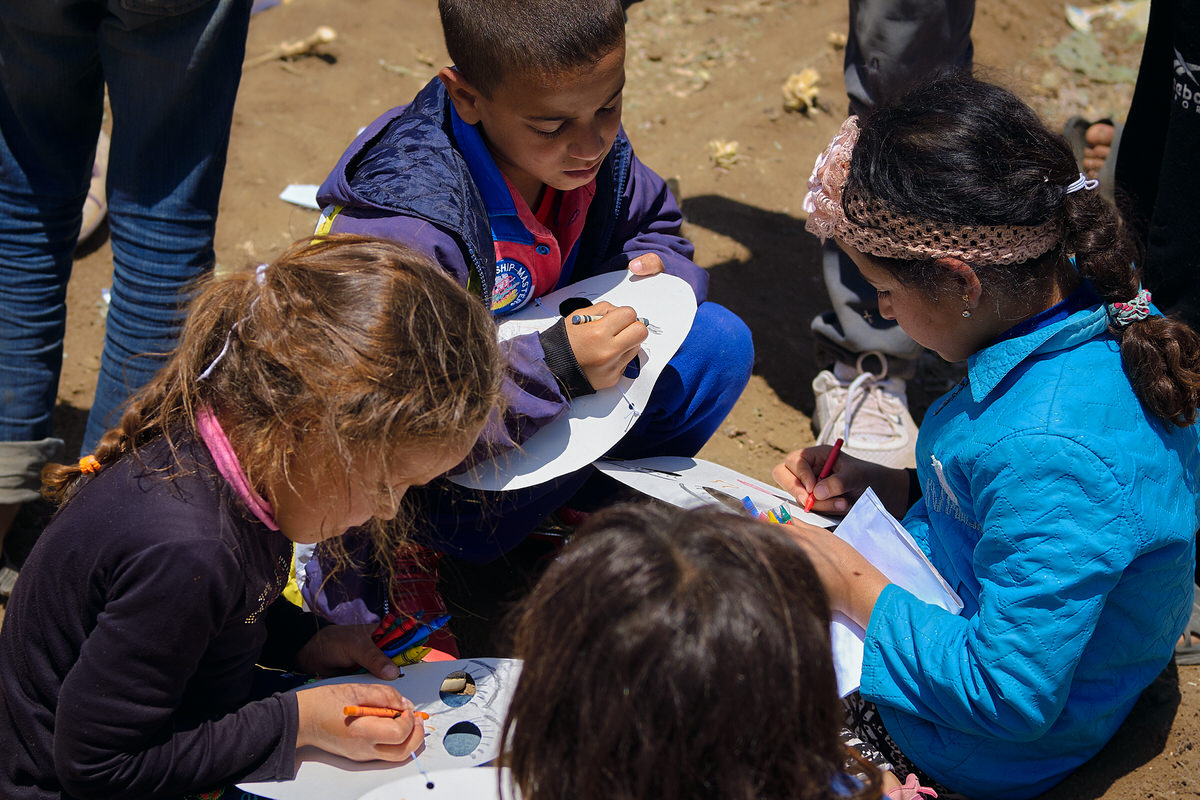
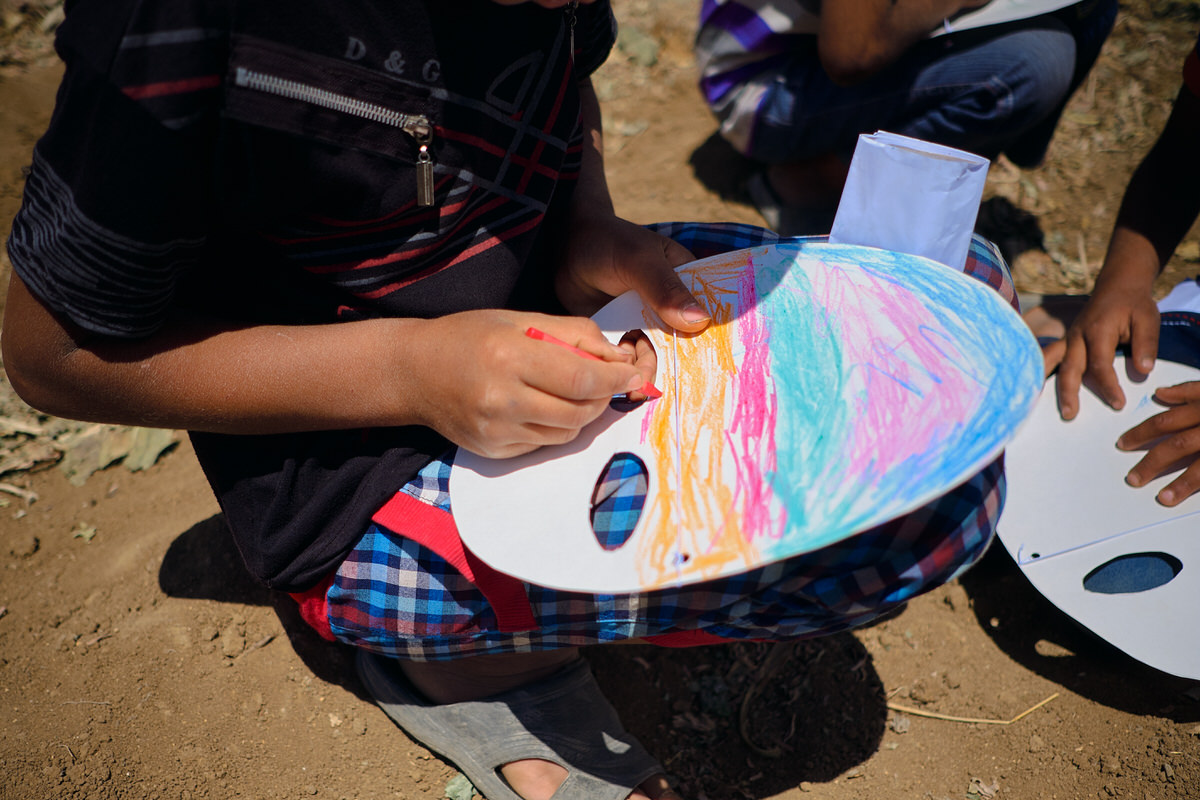

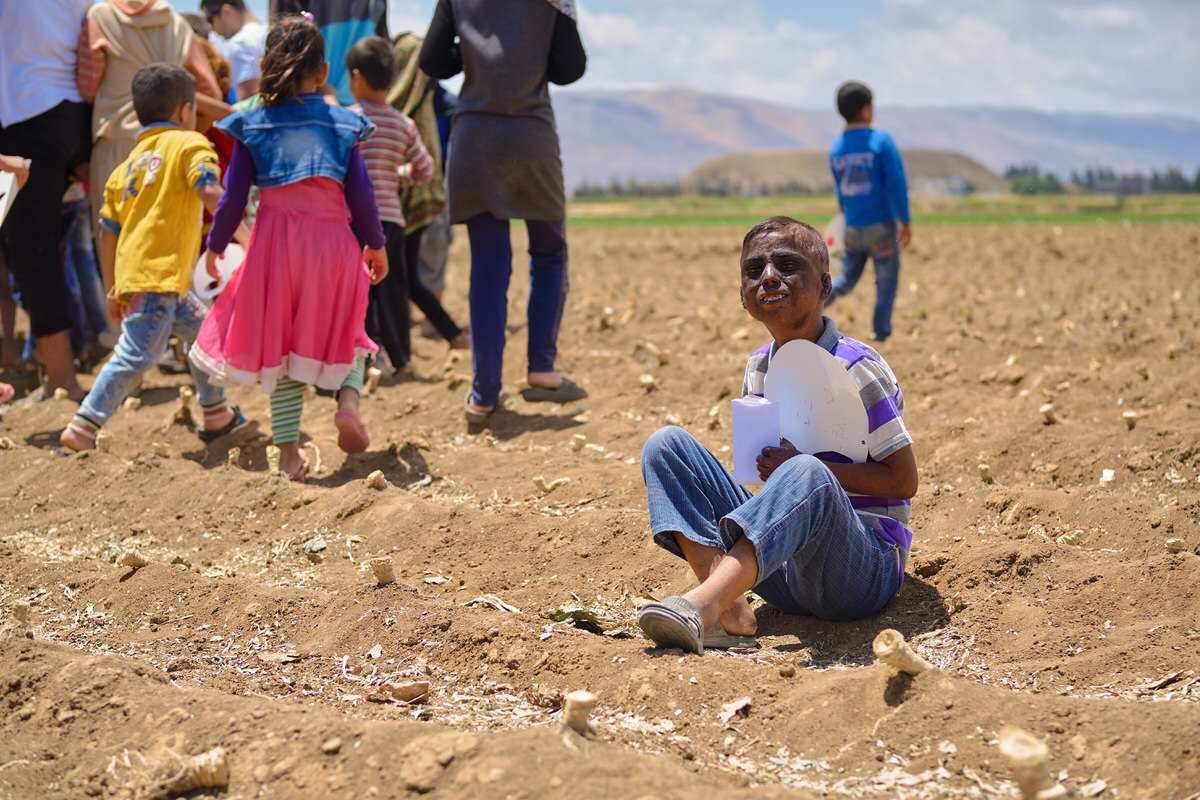
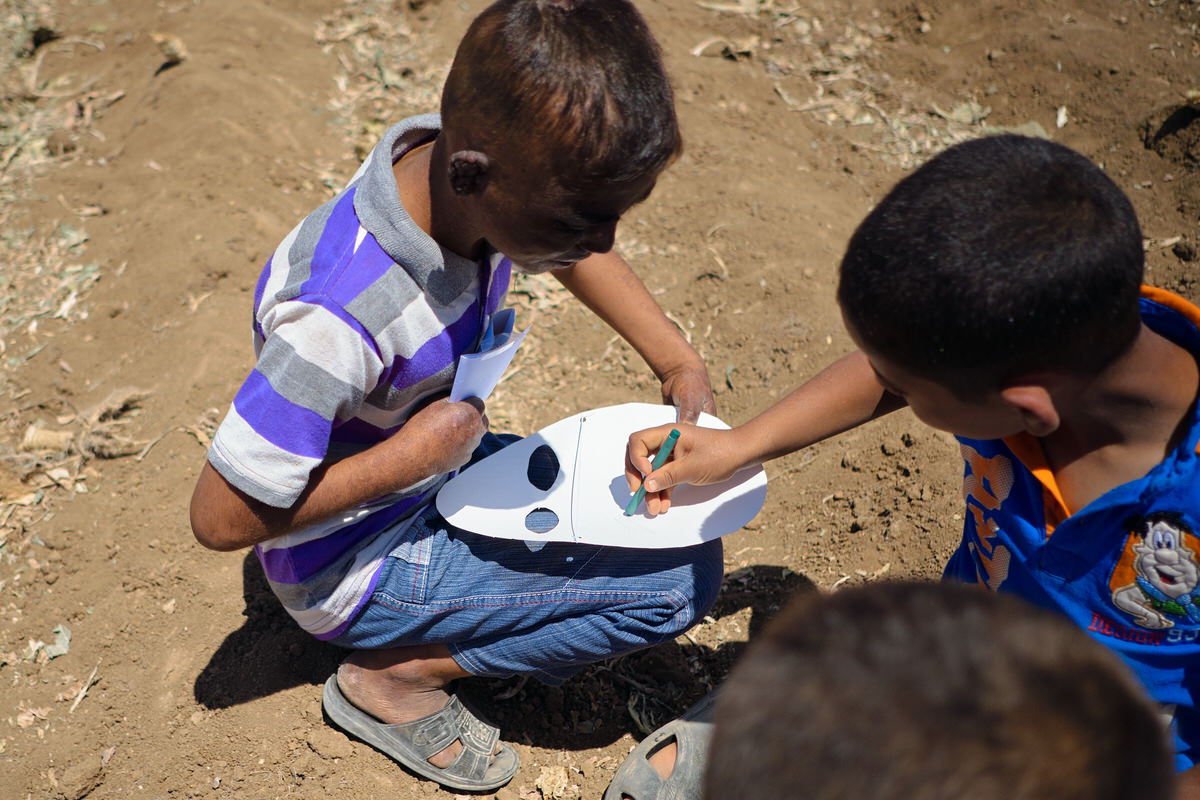



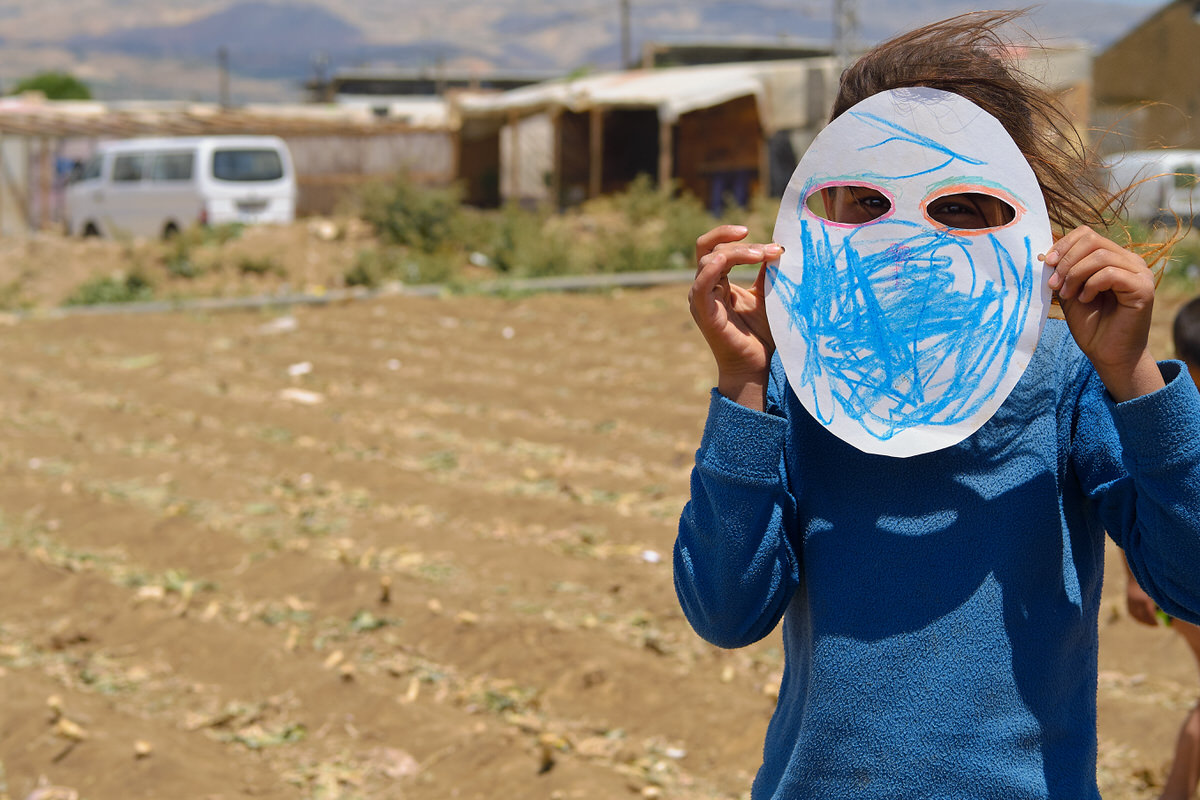
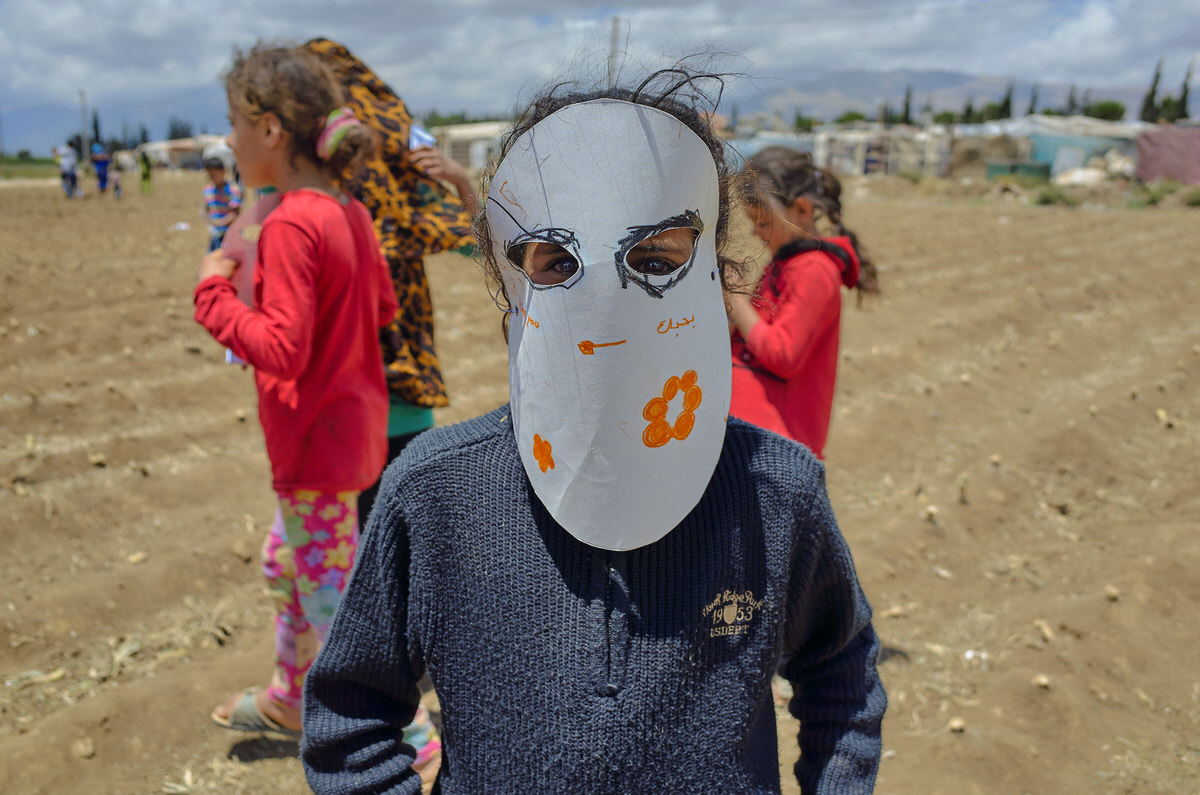
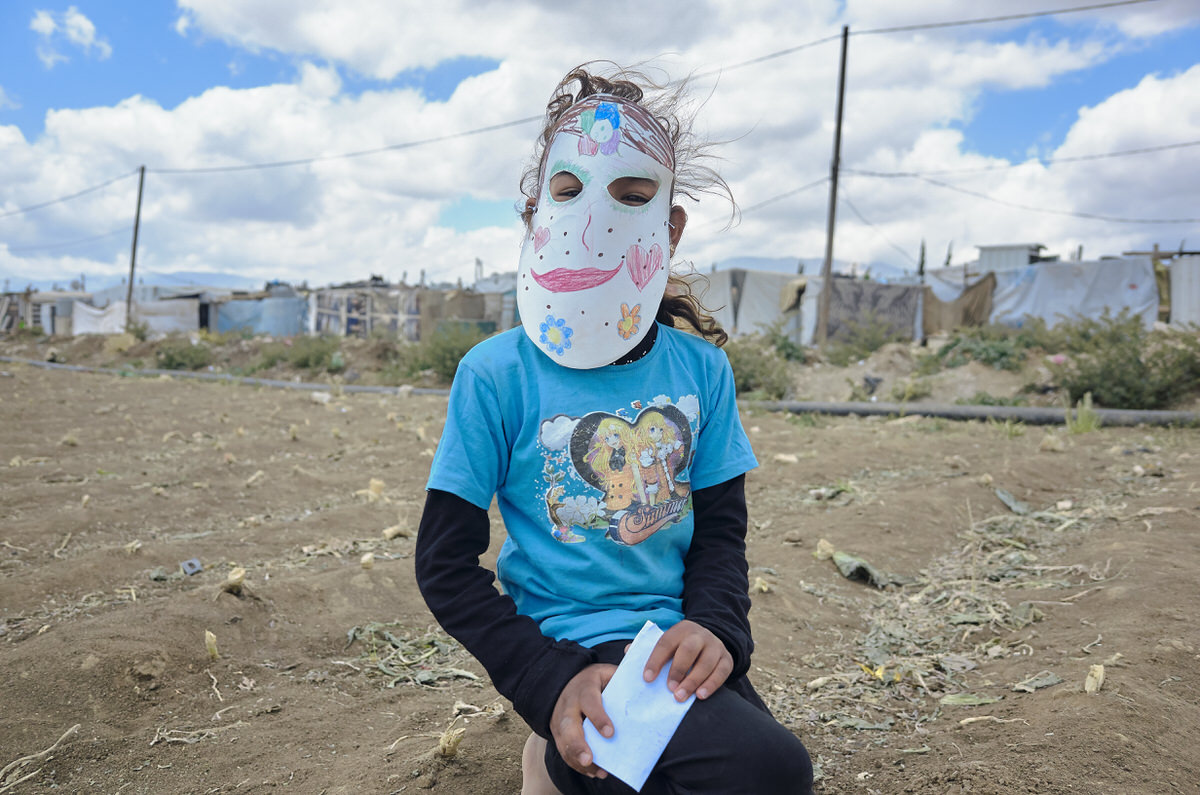


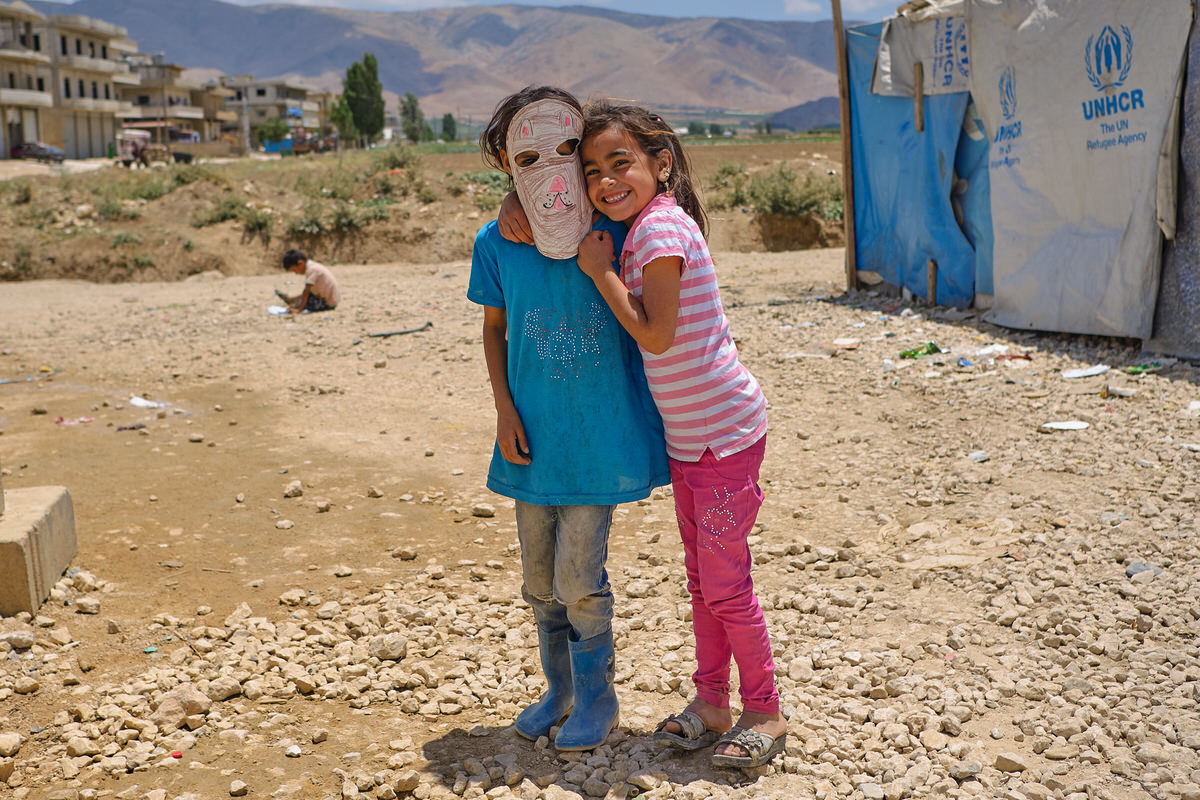
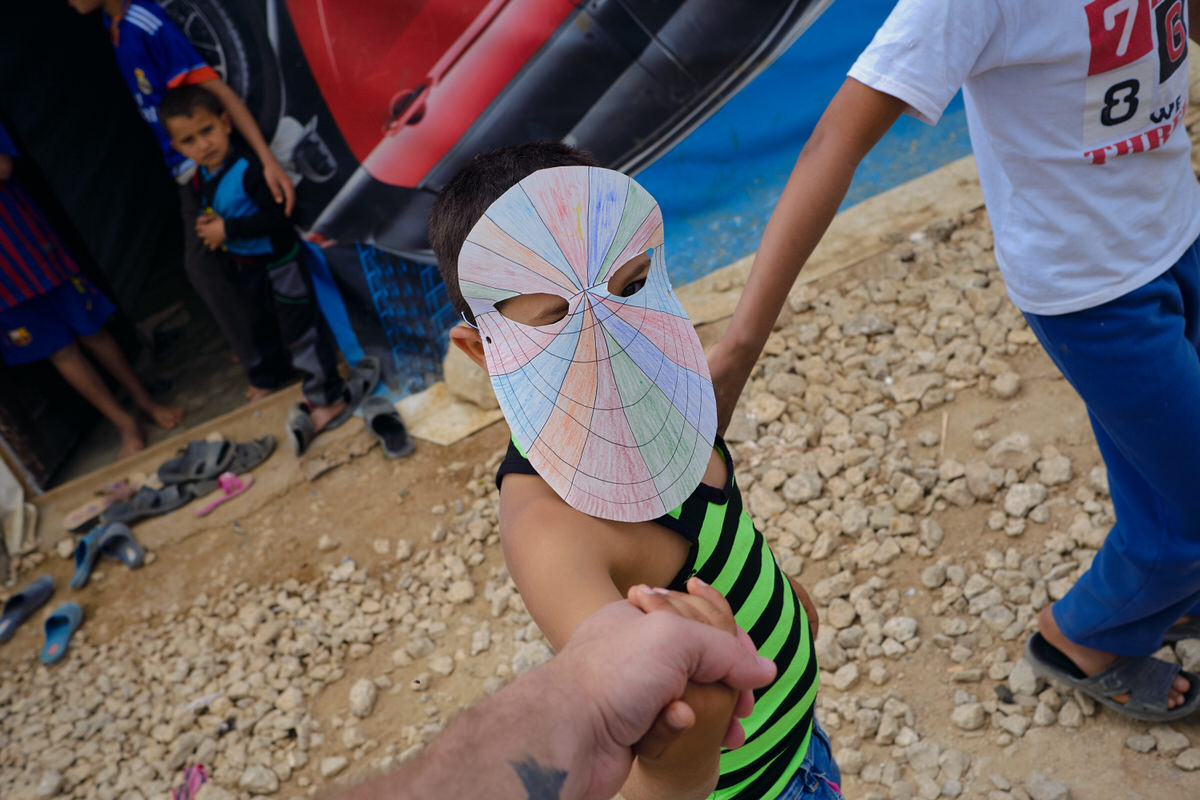

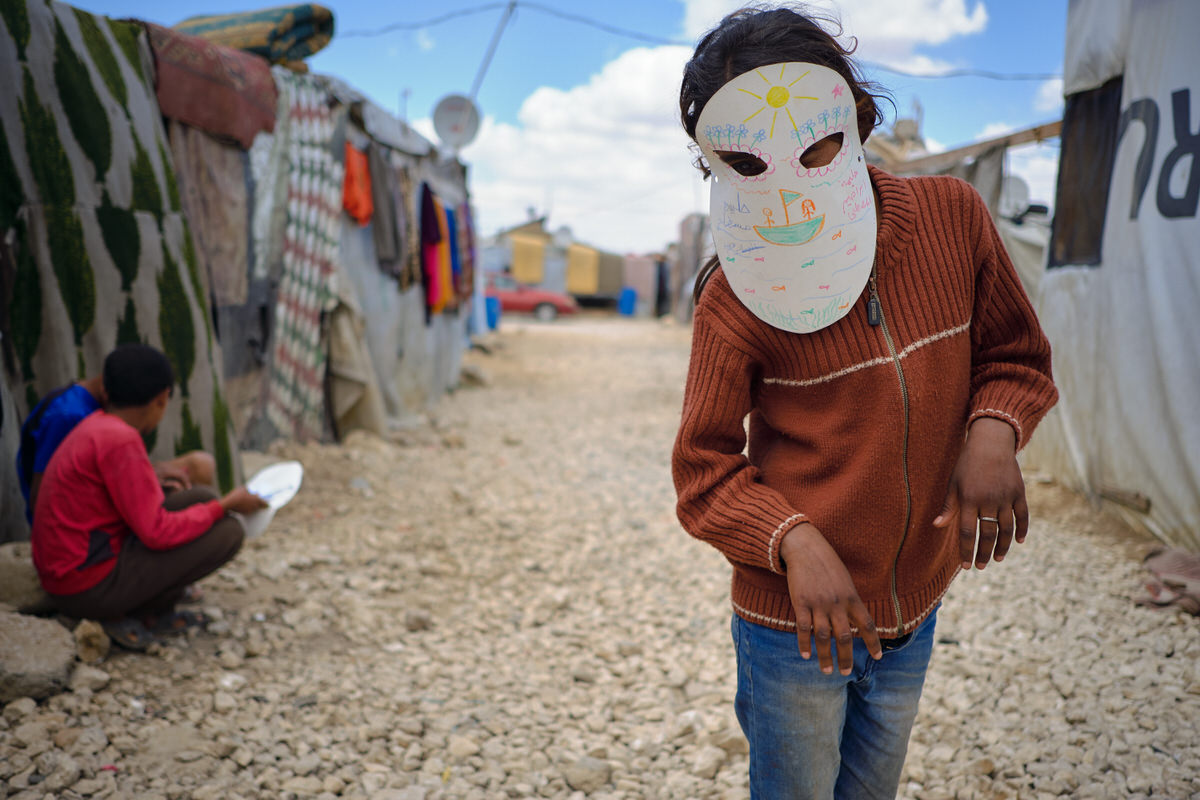
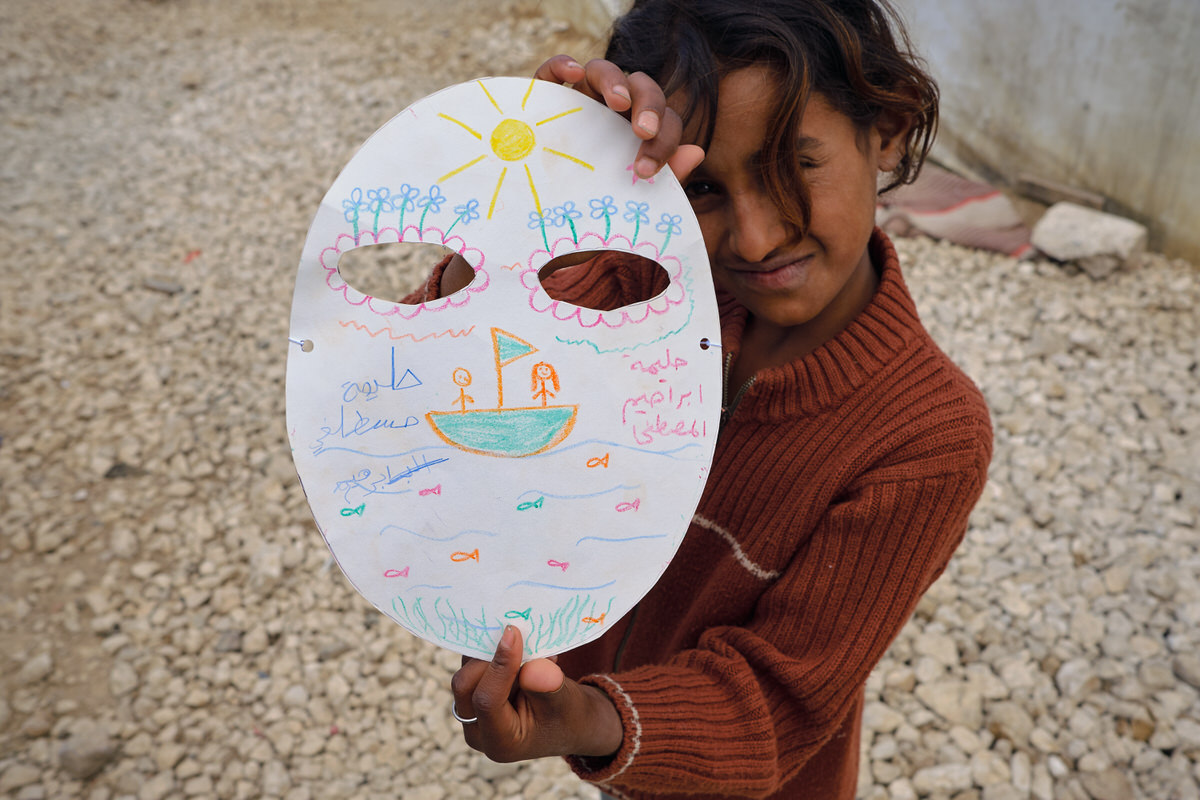


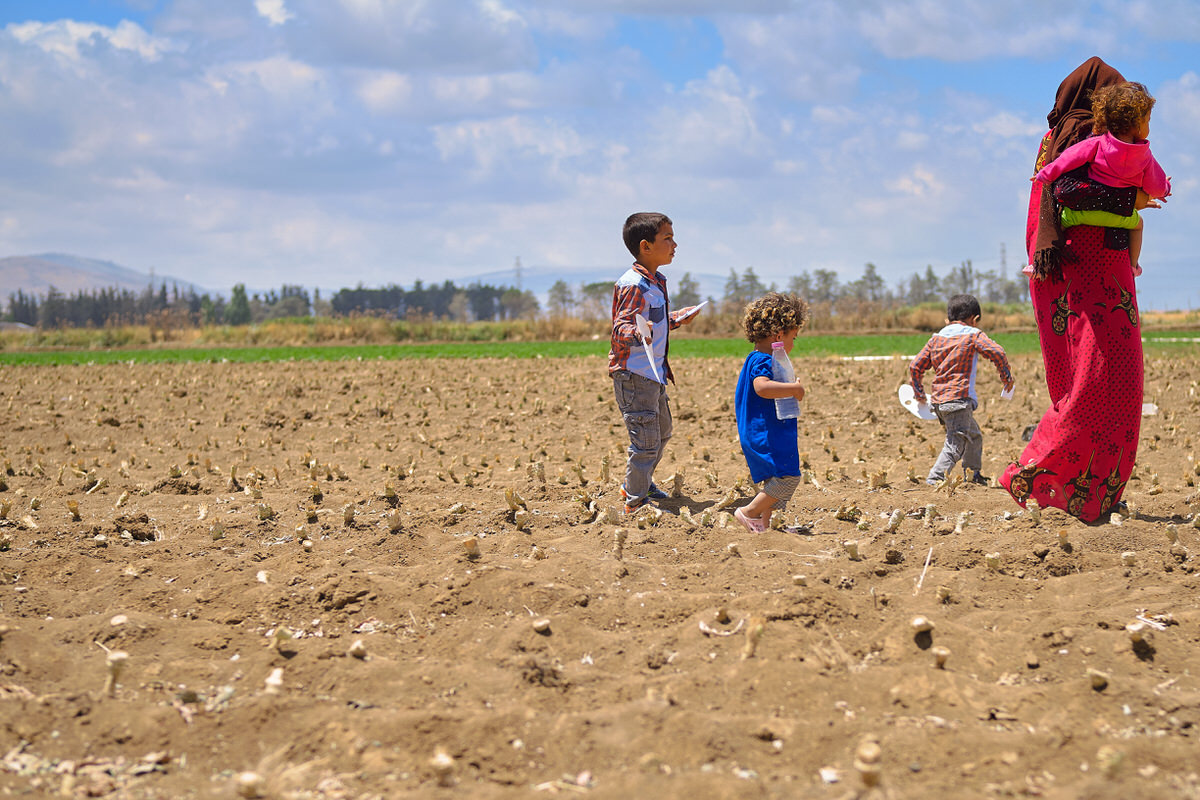
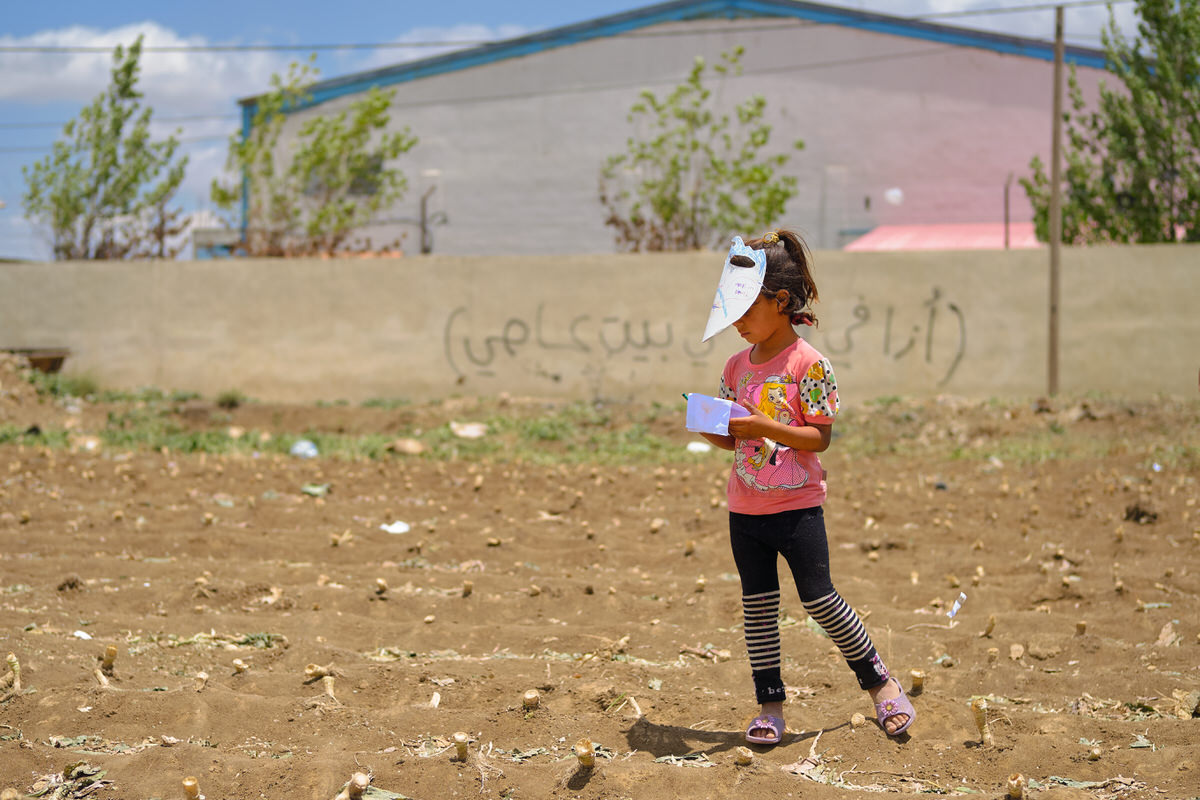
Bekaa Coloring Party
Hundreds of children gathered in a large circle in a field outside the camp when we arrived. Thanks to our volunteers it didn't take long before every child had a coloring pouch and a mask in their hand. Each pouch contained a blank sheet of paper, a set of crayons and coloring book pages, all folded neatly together in origami like fashion. There was a moment of chaos and excitement at the start of the distribution but it quickly transformed into calm as each child began creatively expressing themselves through the art supplies we gave them. After the coloring party was finished several hours later, the children grabbed our hands wanting to bring us to their homes. Having visited a number of these camps over the past year, this particular day I noticed something remarkably different. I could hear laughter and the camp's pale narrow street were filled with children wearing brightly colored masks.
All of the excess crayons that were broken during transport were remelted into larger crayons and donated to a kindergarten inside Shatila refugee camp located in Beirut. I had also brought a large amount of knitting supplies that was given to a single mother in the same camp to support her own business making clothes for children.
Thousands of Crayons Later
Project Bekaa became our last big art supply distribution. Shortly after this event I completed filming my documentary and returned back home to start editing. For a while we shipped a few art supplies or used the luggage space of friends visiting the region. I was no longer living in the Middle East so transporting large quantities of art supplies and finding new camps no longer became feasible.
Driven with a passion that creative expression is a human right and art supplies should be available to every child, Color the Camps, over the course of two years was able to get hundreds of pounds of rescued art supplies in the hands of children in refugee camps. It was one of the most fulfilling experiences of my life and a great example of how connecting opportunity with resources can make an impact both locally and abroad. Should the opportunity ever present itself again I would love to continue this work. Until then, I never leave home without a few boxes of crayons in my luggage.
Sources
- UNHCR
- Save The Children
- Judith M. Burton (2009) Creative Intelligence, Creative Practice: Lowenfeld Redux, Studies in Art Education, 50:4, 323-337, DOI: 10.1080/00393541.2009.11518779
- Chesapeake Family Life
- UNRWA
- Amnesty International
- Human Rights Watch
